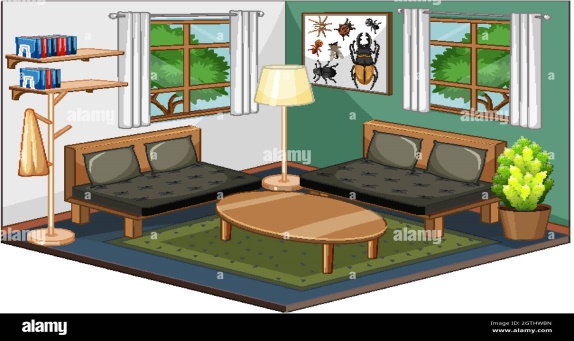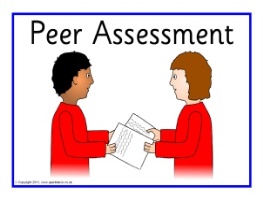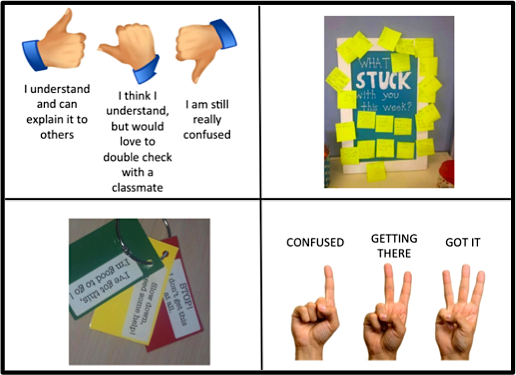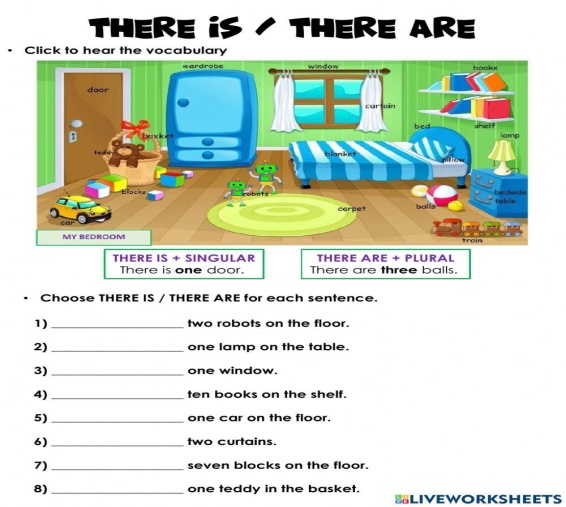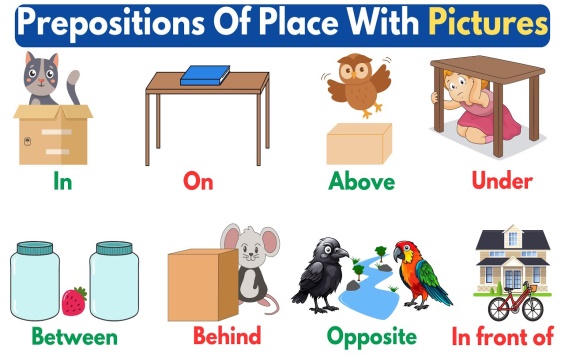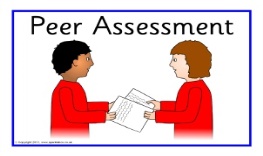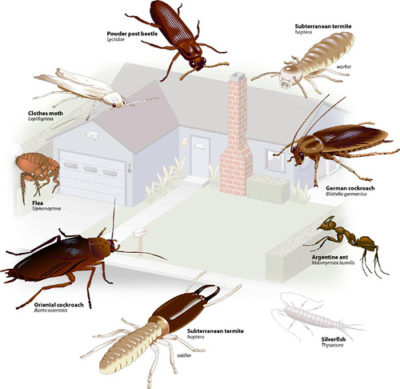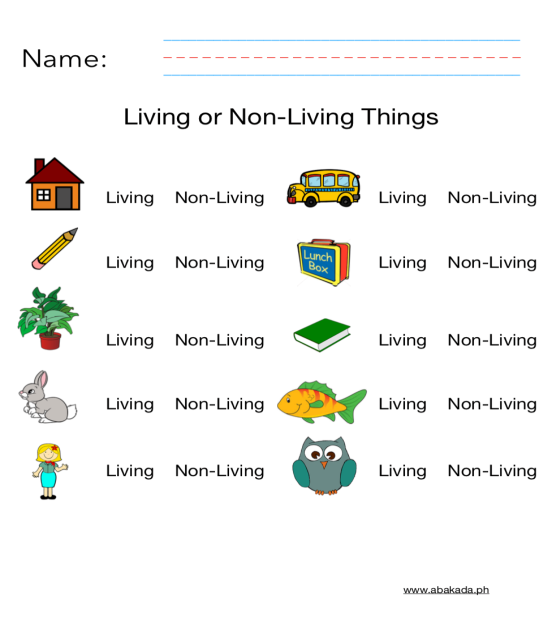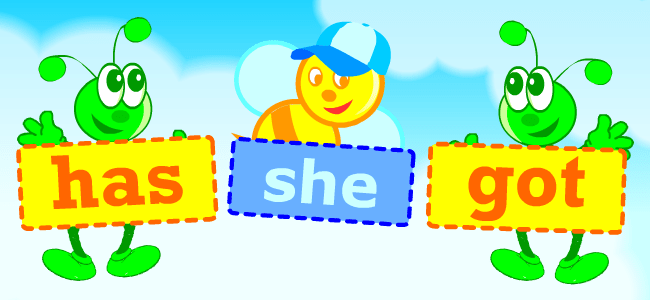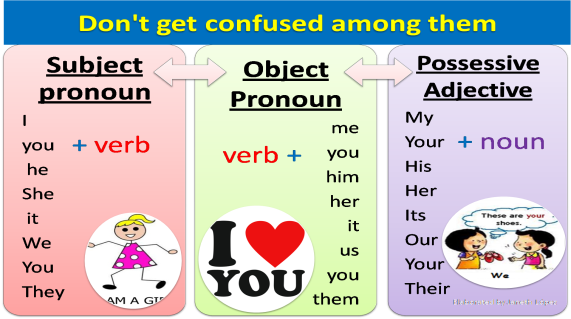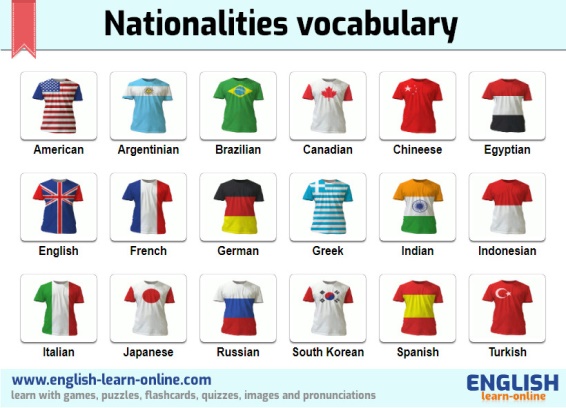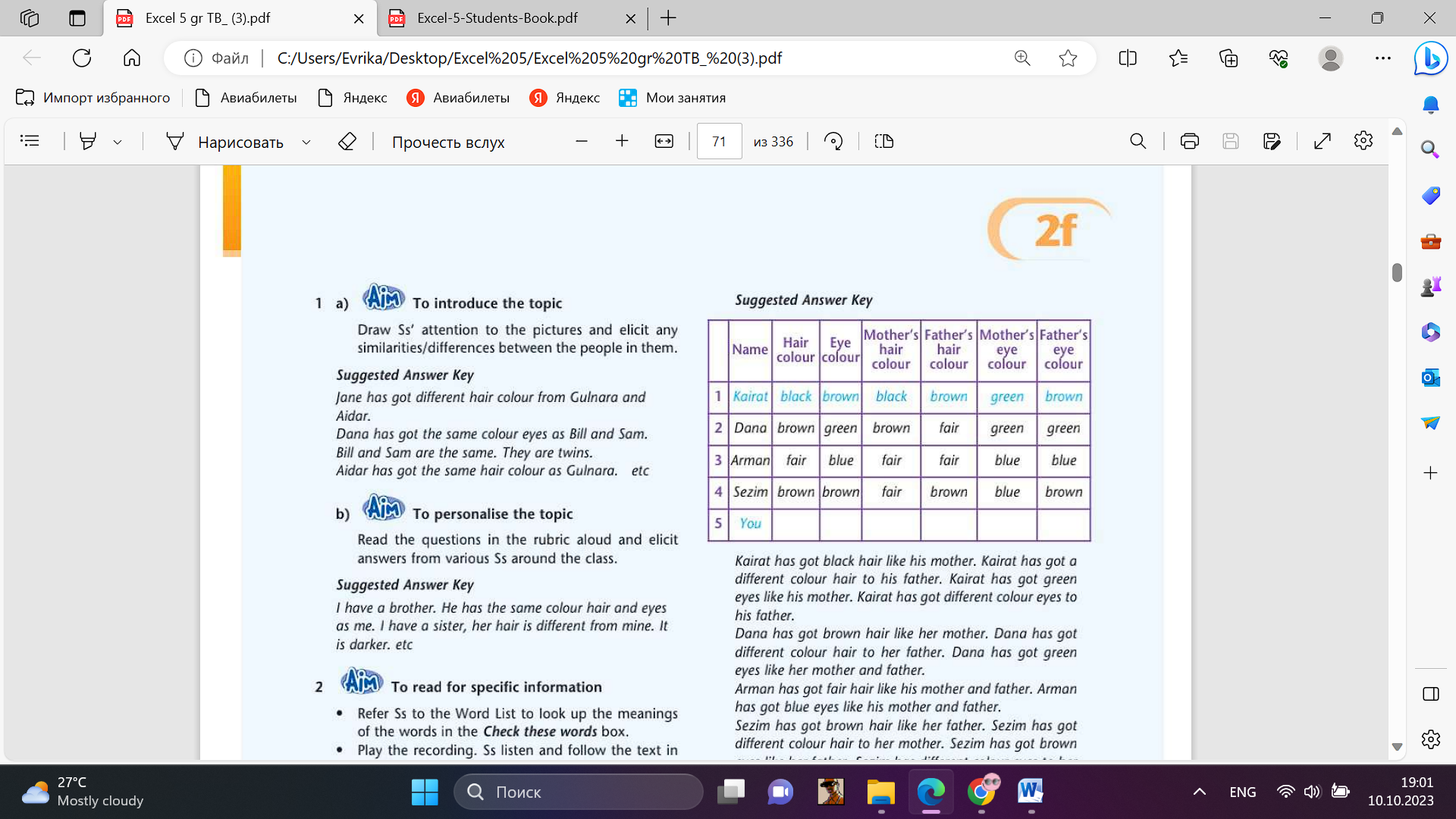Бұл материал сайт қолданушысы жариялаған. Материалдың ішінде жазылған барлық ақпаратқа жауапкершілікті жариялаған қолданушы жауап береді. Ұстаз тілегі тек ақпаратты таратуға қолдау көрсетеді. Егер материал сіздің авторлық құқығыңызды бұзған болса немесе басқа да себептермен сайттан өшіру керек деп ойласаңыз осында жазыңыз

Бонусты жинап картаңызға (kaspi Gold, Halyk bank) шығарып аласыз
1 жыл бойы тегін жүктеу мүмкіндігіне ие болыңыз!

жеңілдік
Short term plan Excel 5 Term 1

Short term plan
|
Unit 1: Home and away lesson 1 |
School: |
||
|
Date: |
Teacher name: |
||
|
Grade: 5 |
Number present: |
absent: |
|
|
Lesson title |
Rooms and furniture |
||
|
Learning objectives |
5.3.1.1 provide basic information about themselves and others at sentence level on an increasing range of general topics; 5.2.6.1 deduce meaning from context in short, supported talk on an increasing range of general and curricular topics; |
||
|
Learning objectives (assessment criteria) |
Learners will be able to: Identify some specific information from the text and use some target vocabulary to describe some features of houses accurately in response to prompts and in production tasks |
||
|
Levels of thinking skills |
Knowledge and comprehension |
||
|
Stages/ Time |
Teachers actions |
Students actions |
Assessment |
Resources |
|
Beginning 5 min |
Greeting. (Whale class, Individually) T tells the class to make groups of 2. Warm up: • Books closed. Say to the class: This is living room. Choose a student and repeat: This is a lamp. What’s this? Elicit the response from the student. • Write the short exchange on the board. Then move around the class, asking each student their room. Finally ask the students to mingle and ask each other their rooms. -What’s this? - It is a table - What are these? - They are armchairs Setting the aim of the lesson.
|
Learners read the given sentences on the board and guess the topic and share with their ideas. Remember and recognize the main vocabulary. |
Teacher controles the process, gives feedback and asks additional questions if it’s nessasery. Teacher evaluate pupils with phrases like: “Good job! Well done!” Formative Assessment
|
Sheets of peppers Pictures of to be
https://images.app.goo.gl/LgNY1RRyeYA3SQo39
|
|
Middle 30 min |
Task. I (Wh, I) (pair dicsussion) Ex: 1 P:9 • Play the recording. Learners listen and repeat chorally or individually. • Draw learners attention to the pictures and elicit which room is which. Differentiation: We will repeat simple words from the listening for a less motivated student and discuss with more motivated students |
Students listen and repeat. ANSWERS 1 kitchen 2 living room 3 bedroom 4 bathroom 5 hall |
T’s feedback Descriptor: - listen and repeat chorally or individually Total: 2 point |
Student’s book |
|
|
Task. II (Wh, I) (Task for location) Ex: 2 P:9 Play the next recording. Learners listen and repeat chorally or individually. Elicit the L1 equivalents from various learners. Explain the task and read out the headings, translating them if necessary. Read the example sentences aloud and then learners work in closed pairs and write the words under the headings and make sentences of their own. Ask various learners around the class to read their sentences aloud to check Ss' answers. |
rooms: bedroom, living room, hall, bathroom, kitchen furniture: bedside cabinet, bed, sofa, cupboards other: cooker, sink, toilet, washbasin, mirror, ceiling, pillows, window, fireplace, wall, floor, door, stairs Suggested Answer Key There is a bed and a bedside cabinet in the bedroom. There is a fireplace in the living room. There is a sofa in the living room. There is a cooker in the kitchen. There is a mirror and a toilet in the bathroom |
Feedback: “Thumbs up, thumbs down” After correct answer teacher shows thumbs up, if there are some mistakes thumbs down with comments Descriptor: - listen and repeat - answer the question Total: 2 point |
Worksheets Stickers |
|
End 5 min |
The Ladder method was used as a reflection. T asks Ss to stick their stickers to the Success Ladder. Green- I understood Yellow-I have some questions Red-I need a help. Ex: P: Home task |
Ss use their stickers to show their knowledge according to the lesson
|
Poster Success Ladder |
|
Short term plan
|
Unit 1: Home and away lesson 2 |
School: |
||
|
Date: |
Teacher name: |
||
|
Grade: 5 |
Number present: |
absent: |
|
|
Lesson title |
Unusual buildings |
||
|
Learning objectives |
5.3.4.1 respond with limited flexibility at sentence level to unexpected comments on an increasing range of general and curricular topics; 5.4.1.1 understand the main points in a limited range of short simple texts on general and curricular topics 5.5.2.1 write with support a sequence of short sentences in a paragraph on a limited range of familiar general topics. |
||
|
Learning objectives (assessment criteria) |
Learners will be able to: - To predict the content of a text - To read for specific information |
||
|
Levels of thinking skills |
Knowledge and comprehension |
||
|
Stages/ Time |
Teachers actions |
Students actions |
Assessment |
Resources |
|
Beginning 5 min |
Greeting. (Whale class, Individually) T tells the class to make groups of 2. Warm up: Books closed. Ask the students, in their own language, if they have been to any other countries. Elicit the names of these countries. You could put them on the board. Setting the aim of the lesson.
|
Learners read the given sentences on the board and guess the topic and share with their ideas. Remember and recognize the main vocabulary. |
Teacher controles the process, gives feedback and asks additional questions if it’s nessasery. Teacher evaluate pupils with phrases like: “Good job! Well done!” Formative Assessment |
Sheets of peppers Pictures of to be |
|
Middle 30 min |
Task. I (Wh, I) (pair dicsussion) Ex: 1 P: 10 • Direct rearners attention to the pictures and elicit what they show. Ask students to say what they think the buildings look like. Give prompts if necessary. Ask: Which building looks like: a football? a violin? a piano? • Play the recording. Students listen and follow the text in their books. Direct students to the Word List to look up the meanings of the words in the Check these words box. |
Learners look at the pictures. What can you see? What do these buildings look like? ANSWERS The first building looks like a piano and a violin The second building looks like a football
|
T’s feedback
Descriptor: - look at the pictures - answer the question Total: 2 point |
Student’s book
https://images.app.goo.gl/aa9xjMJwt7TfuqRt6 |
|
|
Task. II (Wh, I) (Task for location) Ex: 2 P: 10 Allow students time to read the text again and answer the questions. Check Ss’ answers T asks some CCQs:
|
Students read the text and mark the sentences T (true) F (false) or DS (doesn’t say) ANSWERS 1 DS 2 T 3 F 4 F 5 T 6 F Learners answers Yes or No in CCQ ANSWERS -Yes -No -Yes |
Self -assessment
Descriptor: - read the text - write true or false Total: 2 point Descriptor: - answers Yes or No |
Worksheets |
|
|
Task. III (Task for understanding) Ex: 3 P: 10 Allow students two minutes to go through the text. Students close their books and try to remember two things from each text and tell their partner. Ask some pairs to report back to the class. Students open their books and check. A learner with individual needs: will be supported by teacher and by helpers from his class. |
Learners in three minutes. Write two things you remember from each text. Tell your partner. ANSWERS Suggested answer Jan Sankie’s house is in Africa. It is in the shape of a football. The office in China is in the shape of a piano with a violin in front of it. |
T’s feedback
Descriptor: - write two things Total: 2 point |
Pictures Worksheet |
|
|
Task. IV Ex: 4 P: 10 • Explain the task and read the prompts aloud. Brainstorm with students for interesting ideas. Allow students time to write their sentences, then ask various students around the class to read their sentences aloud. |
Learners in three minutes. Write a few sentences about your ideal house. Use the words in the list. Tell the class. ANSWERS Suggested answer My ideal house is in the shape of a basketball. It has got big rooms and a great view from its window. There is a garden outside the house. In the living room there is a fireplace. |
Feedback: “Thumbs up, thumbs down” After correct answer teacher shows thumbs up, if there are some mistakes thumbs down with comments Descriptor: - write a few sentences - use the words in the list Total: 2 point |
|
|
End 5 min |
The Ladder method was used as a reflection. T asks Ss to stick their stickers to the Success Ladder. Green- I understood Yellow-I have some questions Red-I need a help. Home task Ex: P: |
Ss use their stickers to show their knowledge according to the lesson
|
Poster Success Ladder |
|
Short term plan
|
Unit 1: Home and away lesson 3 |
School: |
||
|
Date: |
Teacher name: |
||
|
Grade: 5 |
Number present: |
absent: |
|
|
Lesson title |
Vocabulary: Furniture and Appliances |
||
|
Learning objectives |
5.3.1.1 provide basic information about themselves and others at sentence level on an increasing range of general topics; 5.5.3.1 write with support factual descriptions at text level which describe people, places and objects |
||
|
Learning objectives (assessment criteria) |
Learners will be able to: - To learn about furniture and appliances - Activate and consolidate vocabulary - write about your ideal bedroom |
||
|
Levels of thinking skills |
Knowledge and comprehension |
||
|
Stages/ Time |
Teachers actions |
Students actions |
Assessment |
Resources |
|
Beginning 5 min |
Greeting. (Whale class, Individually) T tells the class to make groups of 2. Warm up: • Books closed. Say something true about the size of your town or city, e.g. I’m (your name). I’m from Budapest. Budapest is big. Use your hands to gesture big to the class. • Ask a student to repeat then go around the rest of the class. Write the sentences on the board for a weaker class Setting the aim of the lesson.
|
Learners read the given sentences on the board and guess the topic and share with their ideas. Remember and recognize the main vocabulary. |
Teacher controles the process, gives feedback and asks additional questions if it’s nessasery. Teacher evaluate pupils with phrases like: “Good job! Well done!” Formative Assessment
|
Sheets of peppers Pictures of to be
https://images.app.goo.gl/YzSnswThAjqz6kmW9
|
|
Middle 30 min |
Task. I (Wh, I) (pair dicsussion) Ex: 5 P: 11 Draw students’ attention to the picture. Students listen and repeat chorally and individually. Elicit theL1 equivalents |
Learners look at the picture. Listen and repeat ANSWERS Students’ own answer |
T’s feedback Descriptor: - look at the picture. - Listen and repeat Total: 2 point |
Student’s book |
|
|
Task. II (Wh, I) (Task for location) Ex: 6 P: 11 Read the Study Skills box aloud to explain the function of the task. Write the headings on the board. Students look at the picture for a minute then close their books. Students copy the headings into their notebooks and try to list as many words as they can remember under each heading. Students in pairs check their T asks some CCQs:
|
Learners look at the picture in ex.5 for a minute. Close your books. Group the words in the picture under these headings. Compare with your partner. ANSWERS Bedroom: pillow, wardrobe, poster, desk, bookcase, Living room: painting, carpet, armchair, curtains, sofa, cushions Bathroom: mirror, bath Kitchen: sink, cooker, fridge, chair, table Learners answers Yes or No in CCQ ANSWERS - No -Yes - No - Yes |
Self -assessment
Descriptor: - look at the picture - classify things Total: 2 point Descriptor: - answers Yes or No |
Worksheets PPP Text New Inside out by Macmillan SB p.12 ex.1 |
|
|
Task. III (Task for understanding) Ex: 7 P: 11 Explain the task and read the example aloud. Ask various students to say what there is in each room. |
Learners look at the rooms in the picture. What is there in each room? Tell the class. ANSWERS There is a poster, a bed, pillows and a desk in the bed room. There’s a washbasin, a toilet, a bath and mirror in the bathroom |
Descriptor: - look at the rooms - describe each room Total: 2 point |
Pictures Worksheet |
|
|
Task. IV (Task for understanding) Ex: 8 P: 11 • Explain the task and allow students some time to draw their ideal bedroom and write about it. Students then compare with their partner and note the similarities and differences. • Ask various pairs around the class to present their ideal bedroom to the class. Alternatively, assign the task as HW and check students’ answers in the next lesson. Display the drawings to the class.
Differentiation: Learners will be supported by teacher and by helpers from his class. |
Learners draw their ideal bedroom. In three minutes write a few sentences about it. ANSWERS My ideal bedroom has got a big bed with lots of pillows and a wardrobe. There’s also carpet on the floor and posters on the wall. My bedroom is cool! |
Feedback: “Thumbs up, thumbs down” After correct answer teacher shows thumbs up, if there are some mistakes thumbs down with comments Descriptor: - draw their ideal bedroom - present their ideal bedroom Total: 2 point |
https://images.app.goo.gl/svzc8rDJJLp6redn7 |
|
End 5 min |
The Ladder method was used as a reflection. T asks Ss to stick their stickers to the Success Ladder. Green- I understood Yellow-I have some questions Red-I need a help. Ex: P: Home task |
Ss use their stickers to show their knowledge according to the lesson
|
Poster Success Ladder |
|
Short term plan
|
Unit 1: Home and away lesson 4 |
School: |
||
|
Date: |
Teacher name: |
||
|
Grade: 5 |
Number present: |
absent: |
|
|
Lesson title |
Use of English: there is/ there are |
||
|
Learning objectives |
5.3.4.1 respond with limited flexibility at sentence level to unexpected comments on an increasing range of general and curricular topics; 5.5.1.1 plan, write, edit and proofread work at text level with support on a limited range of general and curricular topics; 5.6.11.1 use be/look/sound/feel/taste/smell like and use be made of on a limited range of familiar general and curricular topics; |
||
|
Learning objectives (assessment criteria) |
Learners will be able to: - To learn There is / There are, a / an, some, any - practice using some and any |
||
|
Levels of thinking skills |
Knowledge and comprehension |
||
|
Stages/ Time |
Teachers actions |
Students actions |
Assessment |
Resources |
|
Beginning 5 min |
Greeting. (Whale class, Individually) T tells the class to make groups of 2. Warm up: Show and tellThis activity can be adapted to all ages and levels. Some suggestions for show-and-tell ideas include: a family picture, your favourite book, a house tour video, a picture of your room, a memory from a trip, a magnet you bought on holiday, your favourite clothing item, your favourite board game, baby pictures, etc. This is a fabulous low-prep speaking and listening activity that helps students to learn more about their peers. Setting the aim of the lesson.
|
Learners read the given sentences on the board and guess the topic and share with their ideas. Remember and recognize the main vocabulary. |
Teacher controles the process, gives feedback and asks additional questions if it’s nessasery. Teacher evaluate pupils with phrases like: “Good job! Well done!” Formative Assessment
|
Sheets of peppers Pictures of to be
https://images.app.goo.gl/R3JL8Q3Vn8R2QVoj6 |
|
Middle 30 min |
Task. I (Wh, I) (pair dicsussion) Ex: 1 P: 12 • Explain that we use there is to talk about the existence of sth in the singular and there are in the plural. Read the examples in the table aloud and then elicit the answers to complete the rules from students around the class. Differentiation: Learners will be supported by teacher and by helpers from his class. Less motivated learners complete the rules with support. |
Students read the examples and complete the rules in your notebook. ANSWERS 1 there is / there isn’t 2 there are / there aren’t 3 Is there? / Are there? |
T’s feedback Descriptor: - read the examples - complete the rules Total: 2 point |
Student’s book |
|
|
Task. II Wh, I) (Task for location) Ex: 2 P: 12 • To practise there is/there are Explain the task and read the example aloud. Students complete the task. Check students’ answers. A learner with individual needs: will be supported by teacher and by helpers from his class. Task choose There is / There are for each sentence.
|
Learners look at the picture. Complete the gaps in the sentences with the correct form of there is /are. ANSWERS 2 Are there, Yes, there are 3 Are there, Yes, there are 4 Is there, No, there isn’t 5 Are there, No, there aren’t 6 Are there, No, there aren’t |
Self -assessment
Descriptor: - look at the picture - complete the gaps Total: 2 point |
Worksheets https://images.app.goo.gl/FpzY45tPLU62PQ7QA |
|
|
Task. III (Task for understanding) Ex: 3 P: 12 To practise there is/there are through personalisation Explain the task and allow students time to complete the sentences about their own bedrooms. Check students’ answers around the class. |
Students fill the gaps to make the sentences true for you. Tell your partner. . ANSWERS 1 there is 2 there is 3 there aren’t 4 there is 5 there aren’t 6 there is 7 there aren’t there are |
Descriptor: - fill the gaps - make the sentences Total: 2 point |
Pictures Worksheet |
|
|
Task. IV (Task for understanding) Ex: 4 P: 12 •To revise a/an and present some – any • Read the first two example sentences aloud and elicit that we use a with singular items that begin with a consonant sound and an with singular items that begin with a vowel sound. • Read the next example sentence aloud and explain that we use some in affirmative sentences for plural items. • Read the final two example sentences aloud and explain that we use any in negative plural sentences and interrogative plural sentences. Ask different students to read the examples aloud, then elicit when each is used to complete the rules |
Learners read the examples and complete the rules. Answer the question. ANSWERS 1 any 2any 3 any 4 some 5 some |
Feedback: “Thumbs up, thumbs down” After correct answer teacher shows thumbs up, if there are some mistakes thumbs down with comments Descriptor: - read the examples - complete the rules Total: 2 point |
|
|
|
Task. V Ex: 5 P: 12 To practise using some and any Allow students some time to complete the sentences. Differentiation: Learners will be supported by teacher and by helpers from his class. |
Learners fill in some or any ANSWERS 1 any 2any 3 any 4 some 5 some |
Descriptor: - fill the gaps - use some and any Total: 2 point |
|
|
End 5 min |
The Ladder method was used as a reflection. T asks Ss to stick their stickers to the Success Ladder. Green- I understood Yellow-I have some questions Red-I need a help. Ex: P: Home task |
Ss use their stickers to show their knowledge according to the lesson
|
Poster Success Ladder |
|
Short term plan
|
Unit 1: Home and away lesson 5 |
School: |
||
|
Date: |
Teacher name: |
||
|
Grade: 5 |
Number present: |
absent: |
|
|
Lesson title |
Use of English: Prepositions of place |
||
|
Learning objectives |
5.3.6.1 communicate meaning clearly at sentence level during, pair, group and whole class exchanges; 5.6.14.1 use prepositions to talk about time and location; use prepositions like to describe things and about to denote topic, use prepositions of direction to, into, out of, from, towards on a limited range of familiar general and curricular topics |
||
|
Learning objectives (assessment criteria) |
Learners will be able to: - To learn preposition of place - To learn ordinal numbers - To pronouns [Ɵ] [ꝺ] |
||
|
Levels of thinking skills |
Knowledge and comprehension |
||
|
Stages/ Time |
Teachers actions |
Students actions |
Assessment |
Resources |
|
Beginning 5 min |
Greeting. (Whale class, Individually) T tells the class to make groups of 2. Warm up: Look Around Have pairs of students take turns saying where items in the classroom are without saying the object itself. For example, a student could say, “This object is over the door.” The second student guesses which item his partner is describing. “Is it the clock?” If the student gets the answer right, they switch roles. This is also a good way to review vocabulary of classroom objects. Setting the aim of the lesson.
|
Learners read the given sentences on the board and guess the topic and share with their ideas. Remember and recognize the main vocabulary. |
Teacher controles the process, gives feedback and asks additional questions if it’s nessasery. Teacher evaluate pupils with phrases like: “Good job! Well done!” Formative Assessment
|
Sheets of peppers Pictures of to be
https://images.app.goo.gl/CsFAV53WV3ihQL5bA
|
|
Middle 30 min |
Task. I(Wh, I) (pair dicsussion) Ex: 6 P: 13 Students close their books. • Present prepositions of place using your book. Put your book on the desk, then ask and answer: Where’s my book? It’s on the desk. • Put your book in your bag, then ask and answer: Where’s my book? It’s in my bag, etc. Present the rest of the prepositions of place in the same way. • Then put your book in various places around the classroom and ask students to tell you its location. |
Learners look and say. Where’s the ball? ANSWERS 1 the ball is on the box. 2 the ball is under the box. 3 the ball is behind the box. 4 the ball is next to the box. 5 the ball is in front of the box. 6 the ball is between the boxes |
T’s feedback
Descriptor: - look and say. - ask and answer Total: 2 point |
Student’s book |
|
|
Task. II (Wh, I) (Task for location) Ex: 7 P: 13 Explain the task and allow students some time to complete the text. Check students’ answers by asking various students to read out the completed text. T asks some CCQs:
|
Learners look at the picture and fill in the correct prepositions. ANSWERS 1 between 2 on 3 in front of 4 in 5 behind 6 next to / behind Learners answers Yes or No in CCQ ANSWERS - No -Yes - No - Yes |
Self -assessment
Descriptor: - look at the picture - fill in the correct prepositions. Total: 2 point Descriptor: - answers Yes or No |
Worksheets Student’s book |
|
|
Task. III Ex: 8 P: 13 Play the recording with pauses for students to listen and repeat chorally or individually. Pay special attention to students’ pronunciation and intonation and correct where necessary. • Read the task aloud and draw students’ attention to the prompts, then read out the example. • Students complete the task in pairs. Monitor the activity around the class and ask some students to ask and answer in front of the class. Differentiation: Learners will be supported by teacher and by helpers from his class. |
Learners listen and repeat. Which floor are the people on? ANSWERS A: Which floor are Jane and Steve on. B: they are on the sevens floor. A: Which floor are Sue and Helen on? B: they are on the fifth floor. |
Teacher’s comment Descriptor: - listen and repeat. - complete the task in pairs Total: 2 point |
Pictures Worksheet |
|
|
Task. IV Ex: 9 P: 13 Explain to students that th can be pronounced two ways. Play the recording. Students listen and repeat. Draw students’ attention to the words ending in th and inform them that whenever an ordinal number ends in th it always has a /θ/ sound and that all pronouns that begin with th have a /δ/ sound. Elicit other words with the same sounds from students around the class. A learner with individual needs: will be paired with helpers and teacher allows him to use simple, basic statements in his discussion. |
Learners listen and repeat, think of more words with the same sounds. ANSWERS [Ɵ] three, think, thirsty [ꝺ] this, that, then |
Feedback: “Thumbs up, thumbs down” After correct answer teacher shows thumbs up, if there are some mistakes thumbs down with comments Descriptor: - listen and repeat, - think of more words Total: 2 point |
|
|
|
Task. V Ex: 10 P: 13 Explain the task and read the example exchange aloud. Ss work in pairs and ask and answer questions. Monitor the activity around the class and then ask some pairs to act out their exchanges. |
Learners look at the picture. Ask and answer, as in the example. ANSWERS A: Where is the lamp? B: On the bedside cabinet. A: Where are the slippers? B: Next to the bed. A: Where is the vase? B: On the bedside cabinet A: Where is the window? B: Next to the bed. A: Where are the flowers? B: In the vase. A: Where are the books? B: In the bedside cabinet. A: Where is the plant? B: Behind the bed. A: Where is the bedside cabinet? B: Between the bed and the armchair. |
T’s feedback
Descriptor: - look at the picture. - ask and answer Total: 2 point |
|
|
End 5 min |
The Ladder method was used as a reflection. T asks Ss to stick their stickers to the Success Ladder. Green- I understood Yellow-I have some questions Red-I need a help. Ex: P: Home task |
Ss use their stickers to show their knowledge according to the lesson
|
Poster Success Ladder |
|
Short term plan
|
Unit 1: Home and away lesson 6 |
School: |
||
|
Date: |
Teacher name: |
||
|
Grade: 5 |
Number present: |
absent: |
|
|
Lesson title |
Reading: Are you home alone? |
||
|
Learning objectives |
5.2.7.1 recognize the opinion of the speaker(s) in basic, supported talk on an increasing range of general and curricular topics 5.4.2.1 understand with little support specific information and detail in short, simple texts on a limited range of general and curricular topics; |
||
|
Learning objectives (assessment criteria) |
Learners will be able to: - read and talk about household bugs - predict the content of a text |
||
|
Levels of thinking skills |
Knowledge and comprehension |
||
|
Stages/ Time |
Teachers actions |
Students actions |
Assessment |
Resources |
|
Beginning 5 min |
Greeting. (Whale class, Individually) T tells the class to make groups of 2. Warm up: Where is it? Have students bring an unusual item to class or provide one yourself. Then let students take turns hiding the object in the classroom while the other students hide their eyes. Once the student is back in his seat, his classmates ask questions using prepositions of location to try to locate the item. Setting the aim of the lesson.
|
Learners read the given sentences on the board and guess the topic and share with their ideas. Remember and recognize the main vocabulary. |
Teacher controles the process, gives feedback and asks additional questions if it’s nessasery. Teacher evaluate pupils with phrases like: “Good job! Well done!” Formative Assessment
|
Sheets of peppers Pictures of to be
https://images.app.goo.gl/hpDAV6WVXwFDaRGo7
|
|
Middle 30 min |
Task. I (Wh, I) (pair dicsussion) Ex: 1 P: 14 To present vocabulary for household insects • Direct Ss’ attention to the pictures. Play the recording with pauses for Ss to repeat chorally or individually. Elicit the L1 equivalents |
Learners look at the picture. Listen and repeat. What are these words in your language ANSWERS Students’ own answer |
T’s feedback Descriptor: - look at the picture - listen and repeat Total: 2 point |
Student’s book |
|
|
Task. II (Wh, I) (Task for location) Ex: 2 P: 14 To predict the content of a text Ask Ss to read the title and the introduction and then elicit the topic of the text. • Play the recording and Ss listen and follow the text in their books. Direct Ss to the Word List to look up the meanings of the words in the Check these words box. Differentiation with individual need learners: *Define the meanings of the words the words from the text belong to the tittle. |
Learners read the title and the introduction. What is the text about? ANSWERS The text about common household insects. |
Pair -assessment
Descriptor: - read the title - check the meanings of the words Total: 2 point |
Worksheets PPP Text New Inside out by Macmillan SB p.12 ex.1 |
|
|
Task. III Ex: 3 P: 15 To read for specific information Allow Ss time to read the text again and answer the questions. Check Ss’ answers. Differentiation: Learners will be supported by teacher and by helpers from his class. |
Learners read the text and mark the sentences T (true) or F (false) ANSWERS 1 T 2 F 3 T 4 F 5 F 6 T |
Self assessment Descriptor: - read the text - write true or false Total: 2 point |
|
|
|
Task. IV Ex: 4 P: 15 To check comprehension of a text • Ss read the text in Ex. 2. Ss close their books and talk in pairs about what they learnt from the text that they didn’t know before. • Monitor the activity around the class and then ask some Ss to tell the rest of the class their answers. Play the video. Ss watch it and then do the exercises that accompany it |
Learners tell your partner five new things you learnt from the text. ANSWERS There are bugs in every house. Cockroaches can hide behind the fridge. There can be bedbugs in the bed. You can find moths in the wardrobe. Bugs don’t like clean houses. |
T’s comment Descriptor: - read the text - write true or false Total: 2 point |
|
|
|
Task. V Ex: 5 P: 15 To listen for specific information • Explain the task and ask Ss to read through the gapped text about the museum and think about what information may be missing.0 (e.g. 1 noun, 2 noun, 3 number, 4 noun, 5 number, 6 number) Play the recording. Ss listen and fill the gaps |
Learners listen about insect museum and complete the gaps in your notebook. Compare with your partner. ANSWERS 1 gardens 2 bugs 3 100 4 spiders 5 5 6 6 |
Descriptor: - listen about insect - complete the gaps Total: 2 point |
|
|
End 5 min |
The Ladder method was used as a reflection. T asks Ss to stick their stickers to the Success Ladder. Green- I understood Yellow-I have some questions Red-I need a help. Ex: P: Home task |
Ss use their stickers to show their knowledge according to the lesson
|
Poster Success Ladder |
|
Short term plan
|
Unit 1: Home and away lesson 7 |
School: |
||
|
Date: |
Teacher name: |
||
|
Grade: 5 |
Number present: |
absent: |
|
|
Lesson title |
Everyday English. Talking about your room and your things |
||
|
Learning objectives |
5.2.3.1 Understand an increasing range of unsupported basic questions on general and curricular topics 5.3.6.1 communicate meaning clearly at sentence level during, pair, group and whole class exchanges; |
||
|
Learning objectives (assessment criteria) |
Learners will be able to: -Identify the situation and speakers in a dialogue - Identify the context of a dialogue and practice pronunciation/intonation |
||
|
Levels of thinking skills |
Knowledge and comprehension |
||
|
Stages/ Time |
Teachers actions |
Students actions |
Assessment |
Resources |
|
Beginning 5 min |
Greeting. (Whale class, Individually) T tells the class to make groups of 2. Warm up: A Messy Room Show your students a picture of a messy bedroom. Ask them what is wrong with the picture and where the person’s items should be. For example, if clothes are on the floor your students would say, “The clothes should be IN the closet.” Setting the aim of the lesson.
|
Learners read the given sentences on the board and guess the topic and share with their ideas. Remember and recognize the main vocabulary. |
Teacher controles the process, gives feedback and asks additional questions if it’s nessasery. Teacher evaluate pupils with phrases like: “Good job! Well done!” Formative Assessment |
Sheets of peppers Pictures of to be
https://images.app.goo.gl/EG5ZgkfpkFFpjnno7
|
|
Middle 30 min |
Task. I (Wh, I) (pair dicsussion) Ex: 1 P: 16 Ask Ss to read the first exchange and elicit answers to the questions in the rubric Differentiation: Learners will be supported by teacher and by helpers from his class. |
Learners read the first exchange in the dialogue. ANSWERS Bill is at Jim’s house Mrs Smith is Jim’s mum |
Pair assessment
Descriptor: - read the dialogue - identify who’s house Total: 2 point |
Student’s book |
|
|
Task. II (Wh, I) (Task for location) Ex: 2 P: 16 Explain the task. Ss read the sentences and say what they think the dialogue is about (talking about someone's room and things). • Play the recording. Ss listen and check. |
Learners these sentences are from a dialogue between two friends. What is the dialogue about? ANSWERS It is someone’s room and the things in it. |
T’s ffedback
Descriptor: - read the dialogue again - identify who’s room Total: 2 point |
Worksheets Student’s book |
|
|
Task. III (Task for understanding) Ex: 3 P: 16 Play the recording. Ss listen and follow the dialogue in their books and mark the statements. Check Ss' answers. T asks some CCQs:
|
Learners listen and read. Mark the statements T (true) F (false) ANSWERS 1 F 2 F 3 T 4 T 5 F 6 T Learners answers Yes or No in CCQ ANSWERS -Yes -Yes -No |
Self assessment Descriptor: - listen and read. - write true or false Total: 2 point Descriptor: - answers Yes or No |
|
|
|
Task. IV Ex: 4 P: 16 • Read the phrases aloud. Refer Ss back to the dialogue and elicit the synonymous ones from various Ss around the class. A learner with individual needs: will be paired with helpers and teacher allows him to find parts of the dialogue |
Learners find parts of the dialogue which mean ANSWERS 1 is Jim here? 2 where is that? 3 your room is great 4 Yes, it is really big 5 fantastic |
Pair assessment
Descriptor: - find parts of the dialogue Total: 2 point |
|
|
|
Task. V Ex: 5 P: 16 Play the recording for Ex. 3 again. Divide the class into groups of three and ask them to take roles and read the dialogue aloud. • Monitor the activity around the class and ask some groups to read the dialogue aloud in front of the |
Learners take roles and read the dialogue aloud. Mind the intonation. ANSWERS Students’ own answer. |
Descriptor: - take roles - read the dialogue Total: 2 point |
|
|
End 5 min |
The Ladder method was used as a reflection. T asks Ss to stick their stickers to the Success Ladder. Green- I understood Yellow-I have some questions Red-I need a help. Ex: P: Home task |
Ss use their stickers to show their knowledge according to the lesson
|
Poster Success Ladder |
|
Short term plan
|
Unit 1: Home and away lesson 8 |
School: |
||
|
Date: |
Teacher name: |
||
|
Grade: 5 |
Number present: |
absent: |
|
|
Lesson title |
Across Cultures: Landmarks |
||
|
Learning objectives |
5.4.2.1 understand with little support specific information and detail in short, simple texts on a limited range of general and curricular topics; 5.5.2.1 write with support a sequence of short sentences in a paragraph on a limited range of familiar general topics |
||
|
Learning objectives (assessment criteria) |
Learners will be able to: - Stimulate interests in the topic and listen and read for specific information - Read for specific information - Write about a special building in your country |
||
|
Levels of thinking skills |
Knowledge and comprehension |
||
|
Stages/ Time |
Teachers actions |
Students actions |
Assessment |
Resources |
|
Beginning 5 min |
Greeting. (Whale class, Individually) T tells the class to make groups of 2. Warm up: Look Around Have pairs of students take turns saying where items in the classroom are without saying the object itself. For example, a student could say, “This object is over the door.” The second student guesses which item his partner is describing. “Is it the clock?” If the student gets the answer right, they switch roles. This is also a good way to review vocabulary of classroom objects. Setting the aim of the lesson.
|
Learners read the given sentences on the board and guess the topic and share with their ideas. Remember and recognize the main vocabulary. |
Teacher controles the process, gives feedback and asks additional questions if it’s nessasery. Teacher evaluate pupils with phrases like: “Good job! Well done!” Formative Assessment
|
Sheets of peppers Pictures of to be
https://images.app.goo.gl/kHTjCE9toEKQFSam7
|
|
Middle 30 min |
Task. I (Wh, I) (pair dicsussion) Ex: 1 P: 17 Refer Ss to the pictures and ask Ss to tell you what they know about these landmarks. Elicit answers and ask Ss to tell you what information they would like to know about them and write it on the board (e.g. Where are they located? What are they made of? When were they built?) • Play the recording. Ss listen and follow the texts in their books and find the answers to their questions. • Direct Ss to the Word List to look up the meanings of the words in the Check these words box. A learner with individual needs: will be paired with helpers and teacher allows him to write one question for each with support. |
Learners look at the landmarks in the pictures. What do you know about them? What else would you like to learn? Write one question for each. Listen and read. Can you answer your questions? ANSWERS 1 How old is the Eiffel Tower? (over 100 years old) 2 How tall is Baiterek? (105 m tall) 3 Where is Buckingham Palace? (in London, England) |
Pair assessment
Descriptor: - look at the landmarks - цrite one question Total: 2 point |
Student’s book |
|
|
Task. II (Wh, I) (Task for location) Ex: 2 P: 17 Ss read the questions and then read the text again and answer them. • Check Ss' answers. T asks some CCQs:
|
Learners answer the question. ANSWERS 1 The Eiffel Tower is over 100 years old. 2 It is 324 metres tall. 3 It's 105 meters tall. 4 A handprint of the right hand, Nursultan Nazarbayev, the first President of the independent Republic of Kazakhstan. 5 Buckingham Palace is in London, England. 6 There are 775 rooms in Buckingham Palace. Learners answers Yes or No in CCQ ANSWERS -No -Yes -Yes - No |
T’s ffedback
Descriptor: - read the questions - answer the question. Total: 2 point Descriptor: - answers Yes or No |
Worksheets Student’s book |
|
|
Task. III (Task for understanding) Ex: 3 P: 17 This task may be completed with books closed or open. • Elicit sentences from various Ss around the class. Differentiation: A less motivated learner translate the sentences with by helpers |
Learners write and say a sentence about each landmark in the photograph. ANSWERS The Eiffel Tower is in Paris. The Baiterek Tower is in Astana, the capital of Kazakhstan. Buckingham Palace has got 775 rooms |
Self assessment Descriptor: - write and say a sentence Total: 2 point |
|
|
|
Task. IV Ex: 4 P: 17 Explain the task and brainstorm with Ss about special landmarks in your country they may know about. • Assign the task as HW and tell Ss to work in pairs and collect information about a building/landmark using the Internet, encyclopaedias or other reference books and use it to write a short paragraph. • Remind Ss to include the name, location and special features and ask Ss to stick a picture to decorate their piece of writing. Differentiation: A less motivated student will be supported by teacher and by helpers. |
Learners think of a special building or other landmark in your country. Collect information then write a short paragraph about it ANSWERS
Palace of Peace & ReconciliationThe Palace of Peace and Reconciliation is a 77 m high pyramid in Astana. This beautifully-structured building is visible from both banks of the Ishim River. It was opened in 2006 and is a global centre for religious understanding, and the promotion of faith and human equality. It also contains a 1,500-seat opera house. |
Feedback: “Thumbs up, thumbs down” After correct answer teacher shows thumbs up, if there are some mistakes thumbs down with comments Descriptor: - work in pairs - collect information - write a short paragraph Total: 2 point |
https://images.app.goo.gl/SHuSCiJGxArdLUMV7 |
|
End 5 min |
The Ladder method was used as a reflection. T asks Ss to stick their stickers to the Success Ladder. Green- I understood Yellow-I have some questions Red-I need a help. Ex: P: Home task |
Ss use their stickers to show their knowledge according to the lesson
|
Poster Success Ladder |
|
Short term plan
|
Unit 1: Home and away lesson 9 |
School: |
||
|
Date: |
Teacher name: |
||
|
Grade: 5 |
Number present: |
absent: |
|
|
Lesson title |
Across the Curriculum: The London Eye |
||
|
Learning objectives |
5.4.1.1 understand the main points in a limited range of short simple texts on general and curricular topics 5.5.6.1 link, with some support, sentences into coherent paragraphs using basic connectors on a limited range of familiar general topics; |
||
|
Learning objectives (assessment criteria) |
Learners will be able to: - Predict the content of a text - Check comprehension of a text by using target vocabulary |
||
|
Levels of thinking skills |
Knowledge and comprehension |
||
|
Stages/ Time |
Teachers actions |
Students actions |
Assessment |
Resources |
|
Beginning 5 min |
Greeting. (Whale class, Individually) T tells the class to make groups of 2. Warm up: Where is it? Have students bring an unusual item to class or provide one yourself. Then let students take turns hiding the object in the classroom while the other students hide their eyes. Once the student is back in his seat, his classmates ask questions using prepositions of location to try to locate the item. The person who hid the object answers their questions until someone guesses correctly.
|
Learners read the given sentences on the board and guess the topic and share with their ideas. Remember and recognize the main vocabulary. |
Teacher controles the process, gives feedback and asks additional questions if it’s nessasery. Teacher evaluate pupils with phrases like: “Good job! Well done!” Formative Assessment |
Sheets of peppers Pictures of to be
https://images.app.goo.gl/eeG8qEWU2RAnzbtq6
|
|
Middle 30 min |
Task. I(Wh, I) (pair dicsussion) Ex: 1 P: 18 • Direct Ss' attention to the picture and tell them that this is the London Eye. • Elicit the meaning of Design & Technology (a school subject that covers all forms of art) and explain that some buildings/structures can be considered a work of art because of their unusual design. • Explain the task and allow some time to read through the statements and decide which are true and which are not. |
Learners decide in pairs. Which of these sentences are true about London Eye? ANSWERS Sentences 2 and 3 are true. |
Pair assessment
Descriptor: - work in pairs - decide which are true Total: 2 point |
Student’s book |
|
|
Task. II (Wh, I) (Task for location) Ex: 2 P: 18 Explain the task and allow Ss time to read the text again. • Direct Ss to the Word List to look up the meaning of the words in the Check these words box. • Read the example aloud and then elicit sentences from Ss around the class. A learner with individual needs: will be paired with helpers and teacher allows him to write sentences about London EYE using these phrases with support. |
Learners read the text. Write sentences about London EYE using these phrases ANSWERS The London Eye is a popular tourist attraction. From the top you can see all of the city of London. It is a huge wheel. The London Eye is made of steel and glass. It has got 32 capsules. Each capsule has got big windows. It is 135 metres from top to bottom. You can also see Windsor Castle, one of the Queen's homes, from the top. Play the video. Ss watch it, then do the exercises that accompany it. |
T’s ffedback
Descriptor: - read the text - write sentences Total: 2 point |
Worksheets Student’s book |
|
|
Task. III (Task for understanding) Ex: 3 P: 18 Explain the task and ask Ss to look up information on the Internet using the key phrase in the search bar or in encyclopedias /other reference books. • Remind them to answer the questions in the rubric. Ss work in groups and write a short text using the information they collected. • Encourage Ss to stick a picture to illustrate their piece of writing. • Ask some Ss to read their text to the class. Ss can display their texts to the class. |
Learners collect information about a structure/building in your country. ANSWERS The Khan Shatyr building is in Astana, the capital of Kazakhstan. It is the biggest tent in the world at 150 metres high. This unique building is a world-class shopping and entertainment complex. As well as shops there is a rooftop swimming pool and beach. It opened in 2010 and about 30,000 people visit it per day at weekends. |
Feedback: “Thumbs up, thumbs down” After correct answer teacher shows thumbs up, if there are some mistakes thumbs down with comments Descriptor: - work in groups - collect information - write a short text Total: 2 point |
|
|
End 5 min |
The Ladder method was used as a reflection. T asks Ss to stick their stickers to the Success Ladder. Green- I understood Yellow-I have some questions Red-I need a help. Ex: P: Home task |
Ss use their stickers to show their knowledge according to the lesson
|
Poster Success Ladder |
|
Short term plan
|
Unit 1: Home and away lesson 10 |
School: |
||
|
Date: |
Teacher name: |
||
|
Grade: 5 |
Number present: |
absent: |
|
|
Lesson title |
Writing: An email about your new house |
||
|
Learning objectives |
5.3.4.1 respond with limited flexibility at sentence level to unexpected comments on an increasing range of general and curricular topics; 5.4.2.1 understand with little support specific information and detail in short, simple texts on a limited range of general and curricular topics; 5.5.1.1 plan, write, edit and proofread work at text level with support on a limited range of general and curricular topics; |
||
|
Learning objectives (assessment criteria) |
Learners will be able to: - Predict the content of a text - Understand the topic of each paragraph in a text - Write an informal email about your house |
||
|
Levels of thinking skills |
Knowledge and comprehension |
||
|
Stages/ Time |
Teachers actions |
Students actions |
Assessment |
Resources |
|
Beginning 5 min |
Greeting. (Whale class, Individually) T tells the class to make groups of 2. Warm up: Jump and Spell Have students stand up. Tell them a vocabulary word. Have them spell the word and jump at the same time, so if students are spelling “kitchen,” they’d need to jump 7 times. This warmer is quick, simple, and fun. If your students are reluctant to do it, simply do it with them. There’s nothing students love more than seeing their teacher do something ridiculous. K-I-T-C-H-E-N! Setting the aim of the lesson.
|
Learners read the given sentences on the board and guess the topic and share with their ideas. Remember and recognize the main vocabulary. |
Teacher controles the process, gives feedback and asks additional questions if it’s nessasery. Teacher evaluate pupils with phrases like: “Good job! Well done!” Formative Assessment
|
Sheets of peppers Pictures of to be
https://images.app.goo.gl/SrV5yLkMUnx6LZwS6
|
|
Middle 30 min |
Task. I (Wh, I) (pair dicsussion) Ex: 1 P: 19 Ask Ss to read the first sentence in each paragraph and elicit what they think the email is about. • Allow Ss some time to read the whole email and check their answers. • Direct Ss to the Word List to look up the meanings of the words in the • Check these words box. |
Learners look at the email and read the first sentence in each paragraph. ANSWERS The email is about Saule's new house. |
Pair assessment
Descriptor: - look at the email - read the first sentence Total: 2 point |
Student’s book |
|
|
Task. II (Wh, I) (Task for location) Ex: 2 P: 19 Read the Study Skills box aloud. • Allow Ss time to read the text again and elicit which paragraphs match the topics in the rubric. T asks some CCQs:
|
Learners read again. ANSWERS The first paragraph is a description of the house. The second paragraph is a description of Saule's room. Learners answers Yes or No in CCQ ANSWERS -Yes -No -No |
T’s ffedback
Descriptor: - read the text again - match the topics Total: 2 point Descriptor: - answers Yes or No |
Worksheets Student’s book |
|
|
Task. III (Task for understanding) Ex: 3 P: 19 In pairs Ss ask and answer the questions. • Ask various Ss to report back to the class on their house to check Ss' answers. |
Learners answer the question ANSWERS 1 Seven. 2 Two floors 3 Yellow. 4 There is a bed, a bookcase, a wardrobe, a bedside cabinet and a mirror. 5 Yes, I like it very much. |
Self assessment Descriptor: - work in pairs - answer the question Total: 2 point |
|
|
End 5 min |
The Ladder method was used as a reflection. T asks Ss to stick their stickers to the Success Ladder. Green- I understood Yellow-I have some questions Red-I need a help. Ex: P: Home task |
Ss use their stickers to show their knowledge according to the lesson
|
Poster Success Ladder |
|
Short term plan
|
Unit 1 Home and away lesson 11 |
School: |
||
|
Date: |
Teacher name: |
||
|
Grade: 5 |
Number present: |
absent: |
|
|
Lesson title |
Edutainment Summative assessment for the unit “Home and away |
||
|
Learning objectives |
5.4.1.1 understand the main points in a limited range of short simple texts on general and curricular topics 5.5.6.1 link, with some support, sentences into coherent paragraphs using basic connectors on a limited range of familiar general topics; |
||
|
Learning objectives (assessment criteria) |
Learners will be able to: -discuss values and express own points of view -read for coherence and cohesion; to understand the author's purpose |
||
|
Levels of thinking skills |
Knowledge and comprehension |
||
|
Stages/ Time |
Teachers actions |
Students actions |
Assessment |
Resources |
|
Beginning 5 min |
Greeting. (Whale class, Individually) T tells the class to make groups of 2. Warm up: Hot potato Give students a ball. Play some music, let students pass the ball and stop the music. Whoever is holding the ball has to answer a question. Repeat. Setting the aim of the lesson.
|
Learners read the given sentences on the board and guess the topic and share with their ideas. Remember and recognize the main vocabulary. |
Teacher controles the process, gives feedback and asks additional questions if it’s nessasery. Teacher evaluate pupils with phrases like: “Good job! Well done!” Formative Assessment
|
Sheets of peppers Pictures of to be
https://images.app.goo.gl/xDRtjAp6ceRQFAbu9
|
|
Middle 30 min |
Task. I (Wh, I) (pair dicsussion) Ex: 1 P: 20 Learners discuss about values of motherland and express own points of view. As an extension ask Ss if there are similar sayings about home in their language Differentiation: A less motivated learner listen and discuss about values of motherland with support by teacher |
Learners discuss about values of motherland ANSWERS: A: All the sayings are about how people feel about their homes and about what home means to them. If we say 'Home, sweet home', we mean that is very nice to be there. B: There is no other place which is as nice to be as home. The people we love are there, and so it is where our hearts are. Our home is where we feel safe. etc. |
Pair assessment
Descriptor: - look at the family puzzle - identify the names Total: 2 point |
Student’s book |
|
|
Task. II (Wh, I) (Task for location) Ex: 2 P: 20 Explain the task. Allow Ss some time to read the sentences and decide whether each one is true or false. Alternatively, you may allow Ss to review the module and find the relevant information to help them. Check Ss' answers. |
Students do the quiz. Write true or false ANSWERS 1F 2F 3T 4 F 5F 6 F 7T |
T’s ffedback
Descriptor: - identify the family’s gender - match words with opposite Total: 2 point |
Worksheets Student’s book |
|
|
Task. III (Task for understanding) Ex: 3 P: 20 Explain the task and allow Ss time to look through Module 1 and think of quiz questions in pairs. Tell Ss they can use the quiz in the previous task as a model. Offer an example. e.g. The London Eye is in Windsor. (F) Ss swap their quizzes with another pair and do it and then report back to the class. Differentiation: A less motivated learner discuss them together in pairs. |
Learners look at the module one and write T/F quiz of your own. ANSWERS 1 The piano house is in Malawi. 2 You can see a sofa in a living room. 3 Moths live in wardrobes. 4 The Melbourne Museum is in Australia. 5 Buckingham Palace is 24 meters long. 6 Baiterek is in the capital of Kazakhstan. |
Feedback: “Thumbs up, thumbs down” After correct answer teacher shows thumbs up, if there are some mistakes thumbs down with comments Descriptor: - look at the photos - discuss in pairs - match photos Total: 2 point |
|
|
|
Task. IV Ex: 4 P: 20 Explain the task and elicit the meanings of the words in the list. Allow Ss some time to read through the song and fill in the missing words. Play the recording. Ss listen and check their answers. Summative assessment for the unit “Home and away |
Learners read the song and fill in the words from the list. ANSWERS 1 buildings 2 breath 3 sights 4 places 5 holiday 6 rest |
Descriptor: - complete the rules Total: 2 point |
|
|
End 5 min |
The Ladder method was used as a reflection. T asks Ss to stick their stickers to the Success Ladder. Green- I understood Yellow-I have some questions Red-I need a help. Ex: P: Home task |
Ss use their stickers to show their knowledge according to the lesson
|
Poster Success Ladder |
|
Short term plan
|
Unit 2 Living things lesson 12 |
School: |
||
|
Date: |
Teacher name: |
||
|
Grade: 5 |
Number present: |
absent: |
|
|
Lesson title |
Vocabulary: living / non living things |
||
|
Learning objectives |
5.2.4.1 understand the main points of supported extended talk on a range of general and curricular topics; 5.5.7.1 use with some support appropriate layout at text level for a limited range of written genres on familiar general topics and some curricular topics; |
||
|
Learning objectives (assessment criteria) |
Learners will be able to: - Present vocabulary for personal things - Read for specific information - listen for specific information |
||
|
Levels of thinking skills |
Knowledge and comprehension |
||
|
Stages/ Time |
Teachers actions |
Students actions |
Assessment |
Resources |
|
Beginning 5 min |
Greeting. (Whale class, Individually) T tells the class to make groups of 2. Warm up: Jump and Spell Have students stand up. Tell them a vocabulary word. Have them spell the word and jump at the same time, so if students are spelling “goldfish,” they’d need to jump 8 times. This warmer is quick, simple, and fun. If your students are reluctant to do it, simply do it with them. There’s nothing students love more than seeing their teacher do something ridiculous. G-O-l-D-F-I-S-H! Setting the aim of the lesson.
|
Learners read the given sentences on the board and guess the topic and share with their ideas. Remember and recognize the main vocabulary. |
Teacher controles the process, gives feedback and asks additional questions if it’s nessasery. Teacher evaluate pupils with phrases like: “Good job! Well done!” Formative Assessment
|
Sheets of peppers Pictures of to be
https://images.app.goo.gl/xCxWBy9fmBFBa8K99
|
|
Middle 30 min |
Task. I (Wh, I) (pair dicsussion) Ex: 1 P: 21 Draw Ss' attention to the pictures and play the recording. Ss listen and repeat chorally or individually. Elicit the L1 equivalents from various Ss. |
Learners listen and repeat. What are these words in your language? ANSWERS Students’ own answers |
Pair assessment Descriptor: - listen and repeat - answer the question Total: 2 point |
Student’s book |
|
|
Task. II (Wh, I) (Task for location) Ex: 2 P: 21 Elicit the meaning of living and non-living and ask Ss to categorise the words into each type. Give Ss time to complete the task. Check Ss' answers A learner with individual needs: will be paired with helpers and teacher allows him to categorise the words into each type with support. Task: Underline the pictures living or non-living things
|
Learners look at the picture. Answer the question. ANSWERS Living: dog, goldfish, snake, tortoise, flowers Non-living: skateboard, guitar, cap, gloves, helmet, digital camera, watch, comic book, trainers, basketball, scarf |
Feedback: “Thumbs up, thumbs down” After correct answer teacher shows thumbs up, if there are some mistakes thumbs down with comments Descriptor: - look at the picture - answer the question Total: 2 point |
Worksheets Student’s book https://images.app.goo.gl/vq7Mqb9rStNq8zN49 |
|
|
Task. III (Task for understanding) Ex: 3 P: 21 Explain the task and play the recording. Ss listen and fill in what Peter has and hasn't got. Check Ss' answers. |
Learners listen to Peter and complete the sentences ANSWERS He has got a scarf and a helmet. |
Pair assessment
- listen to Peter - complete the sentences Total: 2 point |
|
|
|
Task. IV Ex: 4 P: 21 Ask Ss to look at the pictures again and complete the sentences with what they have/haven't got. Ask some Ss to read their completed sentences aloud. |
Learners complete the sentences. ANSWERS I've got a watch. I haven't got a guitar. |
Descriptor: - complete the sentences Total point 1 |
|
|
End 5 min |
The Ladder method was used as a reflection. T asks Ss to stick their stickers to the Success Ladder. Green- I understood Yellow-I have some questions Red-I need a help. Ex: P: Home task |
Ss use their stickers to show their knowledge according to the lesson
|
Poster Success Ladder |
|
Short term plan
|
Unit 2 Living things lesson 13 |
School: |
||
|
Date: |
Teacher name: |
||
|
Grade: 5 |
Number present: |
absent: |
|
|
Lesson title |
Reading: Amazing Iron man |
||
|
Learning objectives |
5.4.1.1 understand the main points in a limited range of short simple texts on general and curricular topics 5.5.3.1 write with support factual descriptions at text level which describe people, places and objects |
||
|
Learning objectives (assessment criteria) |
Learners will be able to: - Predict the content of a text - Read for specific information - Recall information from a text. |
||
|
Levels of thinking skills |
Knowledge and comprehension |
||
|
Stages/ Time |
Teachers actions |
Students actions |
Assessment |
Resources |
|
Beginning 5 min |
Greeting. (Whale class, Individually) T tells the class to make groups of 2. Warm up: Agree/Disagree Write “I agree” on one side of the board and “I disagree” on the other side. Have everyone stand up and come to the front of the classroom. Say a statement, such as, “Dogs are better than cats.” or “Students shouldn’t bring cellphones to school.” Let students run to “agree” or “disagree” depending on their answer. Setting the aim of the lesson.
|
Learners read the given sentences on the board and guess the topic and share with their ideas. Remember and recognize the main vocabulary. |
Teacher controles the process, gives feedback and asks additional questions if it’s nessasery. Teacher evaluate pupils with phrases like: “Good job! Well done!” Formative Assessment
|
Sheets of peppers Pictures of to be
https://images.app.goo.gl/KXJWV8NSZEJJc2RS9
|
|
Middle 30 min |
Task. I (Wh, I) (pair dicsussion) Ex: 1 P: 22 Direct Ss' attention to the picture and ask if they recognise the man/character, then read the names in the list aloud. Play the recording. Ss listen and follow the text in their books. Elicit answers to the questions in the rubric then direct Ss to the Word List to look up the meanings of the words in the Check these words box. Differentiation: define the names and answers to the questions in the rubric from the text. |
Learners answer the question. ANSWERS The man in the picture is Iron Man/Tony Stark. Stark Industries is his father's company. Pepper Potts is Tony Stark's secretary. . Iron Monger is Iron Man's/Tony Stark's enemy |
Pair assessment
Descriptor: - read the names - answer the question. Total: 2 point |
Student’s book |
|
|
Task. II (Wh, I) (Task for location) Ex: 2 P: 22 Allow Ss time to read the text again and answer the questions. Check Ss' answers. T asks some CCQs:
|
learners read the text again and answer the question ANSWERS 1 Tony is an engineer. 2 His job is at Stark Industries in the USA. 3 Pepper Potts is Tony's loyal secretary. 4 Tony has got a special metal suit. 5 Iron Man can fly. 6 His enemy is Iron Monger. Learners answers Yes or No in CCQ ANSWERS -No -Yes - Yes |
T’s ffedback
Descriptor: -read the text - answer the question Total: 2 point Descriptor: - answers Yes or No |
Student’s book |
|
|
Task. III (Task for understanding) Ex: 3 P: 22 Allow Ss a minute to read the text, then close their books and try and remember two things from the text. • Elicit a variety of answers from Ss around the class. |
Learners write two things you remember from the text. ANSWERS Iron Man can fly. His enemy is Iron Monger. |
Teacher’s comment Descriptor: - read the text - write two things Total: 2 point |
|
|
|
Task. IV Ex: 4 P: 22 Draw Ss' attention to the words and play the recording. Ss listen and repeat chorally or individually. • Elicit the L1 equivalents from various Ss miming the meaning of each word. • Refer Ss to the Word List to find the meanings of the adjectives, if necessary. |
Learners listen and repeat. What are these words in your language? ANSWERS Ss' own answers |
Pair assessment
Descriptor: - listen and repeat - find the meanings of the adjectives Total: 2 point |
|
|
End 5 min |
The Ladder method was used as a reflection. T asks Ss to stick their stickers to the Success Ladder. Green- I understood Yellow-I have some questions Red-I need a help. Ex: P: Home task |
Ss use their stickers to show their knowledge according to the lesson
|
Poster Success Ladder |
|
Short term plan
|
Unit 2 Living things lesson 14 |
School: |
||
|
Date: |
Teacher name: |
||
|
Grade: 5 |
Number present: |
absent: |
|
|
Lesson title |
Vocabulary: Describing appearance |
||
|
Learning objectives |
5.5.3.1 write with support factual descriptions at text level which describe people, places and objects 5.2.6.1 deduce meaning from context in short, supported talk on an increasing range of general and curricular topics 5.3.1.1 provide basic information about themselves and others at sentence level on an increasing range of general topics |
||
|
Learning objectives (assessment criteria) |
Learners will be able to: - Present vocabulary for the parts of the body - Listen for specific information - Practice describing appearance |
||
|
Levels of thinking skills |
Knowledge and comprehension |
||
|
Stages/ Time |
Teachers actions |
Students actions |
Assessment |
Resources |
|
Beginning 5 min |
Greeting. (Whale class, Individually) T tells the class to make groups of 2. Warm up: Books closed. Ask students to work in pairs and to describe their families using have got. Allow them about 1–2 minutes for this. • Get some feedback from the class by asking a few students to describe their partner’s family. T asks students to think about topic that going to conduct. Setting the aim of the lesson.
|
Learners read the given sentences on the board and guess the topic and share with their ideas. Remember and recognize the main vocabulary. |
Teacher controles the process, gives feedback and asks additional questions if it’s nessasery. Teacher evaluate pupils with phrases like: “Good job! Well done!” Formative Assessment
|
Sheets of peppers Pictures of to be
https://images.app.goo.gl/aZP1bNXgpAw6drgr8
|
|
Middle 30 min |
Task. I (Wh, I) (pair dicsussion) Ex: 5 P: 23 Draw Ss' attention to the picture of Merlin and the indicated body parts. • Play the recording. Ss listen and repeat chorally or individually. • Elicit the L1 equivalents from various Ss. |
Learners listen and repeat. What are these words in your language? ANSWERS Students’ own answer |
Pair assessment
Descriptor: - listen and repeat - say the words in L1 Total: 2 point |
Student’s book |
|
|
Task. II (Wh, I) (Task for location) Ex: 6 P: 23 Draw Ss' attention to the cartoon characters and elicit short descriptions of each one to aid understanding of the task. • Read the rubric and allow Ss time to complete the task in pairs. • Check Ss' answers Differentiation with individual need learners: *Define a picture of the people and choose with the words with support. |
learners match each sentence with character. ANSWERS a Shrek c Rapunzel d Merlin e Prince Charming b Princess Fiona |
T’s ffedback
Descriptor: - read the rubric - match each sentence Total: 2 point |
Student’s book |
|
|
Task. III (Task for understanding) Ex: 7 P: 23 Play the recording. Ss listen and identify which characters John talks about. • Check Ss' answers |
Learners listen to John describing his favourite Shrek character. ANSWERS Merlin and Princess Fiona |
Teacher’s comment Descriptor: - listen to John describing Total: 2 point |
|
|
|
Task. IV Ex: 8 P: 23 Ask various Ss around the class to choose one of the characters on this page from Shrek III and describe him/her. • Point out that descriptions usually start with general features (such as size, height or age) and then move on to more specific details (such as hair and eye colour) after that. • Check Ss' answers. Evaluate their presentation. Think about: grammar/syntax mistakes, cohesion, pace, rapport with audience. Fred Flintst and fat with T asks some CCQs:
|
Learners present Shrek III characters to the class ANSWERS Merlin is old and thin with short white hair and a long white beard. Rapunzel is tall, thin and young with very long fair hair. Prince Charming is tall, thin and young with short fair hair. Princess Fiona is short and plump with long red hair. Shrek is big and fat with green skin. Learners answers Yes or No in CCQ ANSWERS -No -Yes - Yes |
Pair assessment
Descriptor: - work in pairs - present Shrek III characters Total: 2 point Descriptor: - answers Yes or No |
|
|
|
Task. V Ex: 9 P: 23 • Explain the task and tell Ss to use the vocabulary from this unit and the verb 'have got'. • Allow time for Ss to complete the task in class or assign as HW. •Remind Ss to decorate their writing with a picture. A learner with less motivated: will be supported by teacher and by helpers from his class. |
Learners write about your favourite cartoon character . find a picture to decorate your paragraph. ANSWERS Fred Flintstone is from Bedrock. He is tall and fat with black hair and a big nose. |
Self assessment Descriptor: - use the vocabulary - write about your favourite cartoon character Total: 2 point |
Worksheets |
|
End 5 min |
The Ladder method was used as a reflection. T asks Ss to stick their stickers to the Success Ladder. Green- I understood Yellow-I have some questions Red-I need a help. Ex: P: Home task |
Ss use their stickers to show their knowledge according to the lesson
|
Poster Success Ladder |
|
Short term plan
|
Unit 2 Living things lesson 15 |
School: |
||
|
Date: |
Teacher name: |
||
|
Grade: 5 |
Number present: |
absent: |
|
|
Lesson title |
Use of English: have got. |
||
|
Learning objectives |
5.3.1.1 provide basic information about themselves and others at sentence level on an increasing range of general topics 5.5.3.1 write with support factual descriptions at text level which describe people, places and objects |
||
|
Learning objectives (assessment criteria) |
Learners will be able to: - Present the verb have got - Practice have got in the affirmative and negative - Practice the interrogative form of the verb have got |
||
|
Levels of thinking skills |
Knowledge and comprehension |
||
|
Stages/ Time |
Teachers actions |
Students actions |
Assessment |
Resources |
|
Beginning 5 min |
Greeting. (Whale class, Individually) T tells the class to make groups of 2. Warm up: Books closed. Remind students about the adjectives from page 36 to describe people. Tell them to work in pairs. Each pair should choose a student from the class and try to describe that student using some of the adjectives. -Ask each pair to tell the rest of the class their description of their chosen student. The rest of the class have to guess who it is. T asks students to think about topic that going to conduct. T: What do you think about today’s theme? Setting the aim of the lesson.
|
Learners read the given sentences on the board and guess the topic and share with their ideas. Remember and recognize the main vocabulary. |
Teacher controles the process, gives feedback and asks additional questions if it’s nessasery. Teacher evaluate pupils with phrases like: “Good job! Well done!” Formative Assessment
|
Sheets of peppers Pictures of to be
https://images.app.goo.gl/4bw5H9jBaV6up9PSA
|
|
Middle 30 min |
Task. I(Wh, I) (pair dicsussion) Ex: 1 P: 24 Ss close their books. Present the verb have got. • Point to your eyes and say: I have got blue eyes. Then write it on the board. Repeat using the rest of the affirmative forms. • Point to your nose and say: I have got a small nose. I haven't got a big nose. Write the negative form on the board and underline haven't got. Give examples in all forms. |
Learners read the table ANSWERS Student’s own answer |
Pair assessment
Descriptor: - complete the task individually - use short form’s or ‘ve Total: 2 point |
Student’s book |
|
|
Task. II (Wh, I) (Task for location) Ex: 2 P: 24 • Explain the task and point out that the pictures show characters from Star Wars. • Allow time for Ss to complete the task. Check Ss' answers.
|
Learners fill the gaps: have/has, haven’t/hasn’t ANSWERS 1 haven't got 2 hasn't got, has got 3 has got, has got 4 has got, hasn't got |
T’s ffedback
Descriptor: - fill the gaps - complete the task Total: 2 poinе |
Student’s book |
|
|
Task. III (Task for understanding) Ex: 3 P: 24 Explain the task Ss make sentences. • Monitor the activity around the class and then ask some Ss to share their sentences with the rest of the class. |
Learners use these phrases to make true sentences about the characters. ANSWERS Suggested Answer Key Yoda has got a small body, and he has got a small nose. He hasn't got small eyes. Queen Amidala has got long hair, and she has got big eyes. Jar Jar Binks has got big eyes, and he has got full lips. Luke Skywalker has got big eyes, and he has got short hair and thin lips. Princess Leia has got long hair and full lips. |
Feedback: “Thumbs up, thumbs down” After correct answer teacher shows thumbs up, if there are some mistakes thumbs down with comments Descriptor: - use these phrases - make true sentences Total: 2 point |
|
|
|
Task. IV Ex: 4 P: 24 Explain the task. Ss do the task. • Monitor the activity around the class, then ask some • Ss to ask and answer the questions aloud. A learner with individual needs: will be paired with helpers and teacher allows him to complete the gaps with support. |
Learners complete the gaps and answer the questions ANSWERS 2 Has Ulan got a skateboard? Yes, he has. 3 Has Dana got a dog? Yes, she has. 4 Have Dana and Ulan got a goldfish? Yes, they have. 5 Have Dana and Ulan got |
Pair assessment
Descriptor: - complete the gaps - complete the gaps Total: 2 point |
|
|
|
Task. V Ex: 5 P: 24 Explain the task and allow students time to form the questions. Circulate to help if needed. When they are ready, tell students to work in pairs to ask and answer the questions. Monitor, checking they are using the questions correctly and that they are responding appropriately. Get some feedback from each pair A learner with less motivated: will be supported by teacher and by helpers from his class. |
Learners make questions with have got. Then ask and answer the questions with partner. ANSWERS : 1 Has your Mum got a Ferrari? 2 Have we got English every day? 3 Have you got a dog? 4 Have you got any brothers and sisters? 5 How many uncles and aunts have you got? 6 Have your friends got computers? |
Self assessment Teachers comment Descriptor: - work in pairs - make questions Total: 2 point |
Worksheets |
|
End 5 min |
The Ladder method was used as a reflection. T asks Ss to stick their stickers to the Success Ladder. Green- I understood Yellow-I have some questions Red-I need a help. Ex: P: Home task |
Ss use their stickers to show their knowledge according to the lesson
|
Poster Success Ladder |
|
Short term plan
|
2Unit 4 Living things lesson 16 |
School: |
||
|
Date: |
Teacher name: |
||
|
Grade: 5 |
Number present: |
absent: |
|
|
Lesson title |
Possessive adjectives /pronouns |
||
|
Learning objectives |
5.3.1.1 provide basic information about themselves and others at sentence level on an increasing range of general topics 5.5.7.1 use with some support appropriate layout at text level for a limited range of written genres on familiar general topics and some curricular topics; 5.6.3.1 use a growing variety of adjectives on a limited range of familiar general and curricular topics. |
||
|
Learning objectives (assessment criteria) |
Learners will be able to: - Present possessive adjectives/pronouns and consolidate through translation. - Practice personal pronouns/possessive adjectives/possessive pronouns - Present This – These. That – Those |
||
|
Levels of thinking skills |
Knowledge and comprehension |
||
|
Stages/ Time |
Teachers actions |
Students actions |
Assessment |
Resources |
|
Beginning 5 min |
Greeting. (Whale class, Individually) T tells the class to make groups of 2. Warm up: Books closed. Ask students to work in pairs to tell each other about their favourite photos at home or on their computers. • Get feedback from a few pairs by asking a few students to describe their partner’s photos. T asks students to think about topic that going to conduct. T: What do you think about today’s theme? Setting the aim of the lesson.
|
Learners read the given sentences on the board and guess the topic and share with their ideas. Remember and recognize the main vocabulary. |
Teacher controles the process, gives feedback and asks additional questions if it’s nessasery. Teacher evaluate pupils with phrases like: “Good job! Well done!” Formative Assessment
|
Sheets of peppers Pictures of to be
https://images.app.goo.gl/YV27sxt5T3utJDhd8
|
|
Middle 30 min |
Task. I (Wh, I) (pair dicsussion) Ex: 6 P: 25 Ss open their books and read the table. Elicit the LT equivalents for the possessive adjectives and possessive pronouns in order to check Ss' understanding. |
Learners read the table. Say the possessive adjectives in your language ANSWERS Students’ own answer |
Pair assessment
Descriptor: - read the table - translate in L1 Total: 2 point |
Student’s book |
|
|
Task. II (Wh, I) (Task for location) Ex: 7 P: 25 Explain the task. Allow time for Ss to complete the task. Check Ss' answers. Ask Ss to identify which are personal pronouns (PP) or possessive adjectives (PA), and possessive pronouns (PPR). Differentiation with individual need will be supported by teacher and by helpers from his class. |
Learners choose the correct word ANSWERS 1 She (PP), her (PA) 2 He (PP), his (PPR) 3 My (PA), theirs (PPR) 4 They (PP) 5 Our (PA), Its (PA) 6 mine (PPR) |
T’s ffedback
Descriptor: - listen to the dialogue. - complete the task Total: 2 point |
Student’s book |
|
|
Task. III (Task for understanding) Ex: 8 P: 25 Explain that when we talk about more than one thing, we usually add -s to the noun. e.g. desk-desks Read the examples in the table aloud and focus Ss' attention on the different plural endings. Then, read the theory for irregular plurals aloud. Ss close their books. Drill Ss. Read nouns in the singular aloud. Ss say the relevant plural form. |
Learners read the rules. Answer the question. ANSWERS Student’s own answer |
Teacher’s comment Descriptor: - work pairs - read the rules Total: 2 point |
|
|
|
Task. IV Ex: 9 P: 25 Allow Ss some time to complete the task. Check Ss' answers on the board. Ask Ss which are irregular plurals (1). A learner with individual needs: will be paired with helpers and teacher allows him write the plurals with support. |
Learners write the plurals. ANSWERS scarf-scarves, day - days, cap - caps, boy-boys, student - students, eye - eyes, school - schools, ear - ears, match-matches, knife - knives, fox - foxes, man – men (1), baby - babies, name - names, ball-balls, glass-glasses, foot - feet (1), child - children (1) |
Pair assessment
Descriptor: - work in pairs - write the plurals. Total: 2 point |
|
|
End 5 min |
The Ladder method was used as a reflection. T asks Ss to stick their stickers to the Success Ladder. Green- I understood Yellow-I have some questions Red-I need a help. Ex: P: Home task |
Ss use their stickers to show their knowledge according to the lesson
|
Poster Success Ladder |
|
Short term plan
|
Unit 2 Living things lesson 17 |
School: Teacher name: |
||
|
Date: |
|||
|
Grade: 5 |
Number present: |
absent: |
|
|
Lesson title |
Use of English: This/that-these/those |
||
|
Learning objectives |
5.3.1.1 provide basic information about themselves and others at sentence level on an increasing range of general topics 5.5.7.1 use with some support appropriate layout at text level for a limited range of written genres on familiar general topics and some curricular topics; 5.6.3.1 use a growing variety of adjectives on a limited range of familiar general and curricular topics; |
||
|
Learning objectives (assessment criteria) |
Learners will be able to: - Learn the structure of a simple blog. - Learn and practise how to use and, but, and or. |
||
|
Levels of thinking skills |
Knowledge and comprehension |
||
|
Stages/ Time |
Teachers actions |
Students actions |
Assessment |
Resources |
||||||||||||||||||||||||
|
Beginning 5 min |
Greeting. (Whale class, Individually) T tells the class to make groups of 2. Warm up: • Books closed. Divide students into pairs. Ask them to tell each other how often they use the internet and what they use it for. • After about 1 minute, stop the students and get some feedback from each pair by asking a student to describe their partner’s use of the internet. T: What do you think about today’s theme? Setting the aim of the lesson.
|
Learners read the given sentences on the board and guess the topic and share with their ideas. Remember and recognize the main vocabulary. |
Teacher controles the process, gives feedback and asks additional questions if it’s nessasery. Teacher evaluate pupils with phrases like: “Good job! Well done!” Formative Assessment
|
Sheets of peppers Pictures of to be
https://images.app.goo.gl/XN6wRdvuKGa8pudz8
|
||||||||||||||||||||||||
|
Middle 30 min |
Task. I (Wh, I) (pair dicsussion) Ex: 10 P: 25 Ss close their books. Present this/these- that/those. Point to a book close to you and say: This is a book. Then write it on the board. Point to a book far away from you and say: That is a book. Then write it on the board. Present the plural forms the same way Ask questions to check Ss' understanding: What do we use for things that are near to us? (this/these). What do we use for things that are far away from us? (that/those). As an extension, point to various things in the classroom. Ss, in teams, make sentences using this/these that/those. Each correct sentence gets 1 point. The team with the most points wins. A learner with individual needs: will be paired with helpers and teacher allows him to write what Jean and Tom say with support. |
Learners read the rules and the examples. Then write what Jean and Tom say ANSWERS Tom: This is my digital camera. This is my cap. These are my trainers. Jean: Those are my gloves. That is my scarf. That is my handbag. |
Feedback: “Thumbs up, thumbs down” After correct answer teacher shows thumbs up, if there are some mistakes thumbs down with comments Descriptor: - read the rules - make sentences Total: 2 point |
Student’s book |
||||||||||||||||||||||||
|
|
Task. II (Wh, I) (Task for location) Ex: 11 P: 25 Work together with a S to demonstrate the example. Point to various objects around the class and elicit the corresponding English word (e.g. window, desk, handbag, board, chair, door, map, pen, pencil, notebook, book etc). Ask several pairs of Ss to perform the task for the class. Check Ss' answers. Differentiation with individual need learners: *Complete the task and makes sentences using this/these, that/those with support. |
Learners point to things near/far from you. Your partner makes sentences using this/these, that/those ANSWERS: A: (points to the desk near you) B: This is a desk. (points to the door which is far from you) A: That is a door. |
T’s ffedback
Descriptor: - point to things near/far - make sentences Total: 2 point |
Student’s book |
||||||||||||||||||||||||
|
|
Task. III (Task for understanding) Ex: 12 P: 25 Play the recording. Ss listen and tick the correct plural sounds. Play the recording again with pauses, for Ss to listen and repeat chorally or individually |
Learners listen and tick √. Listen again and repeat. ANSWERS:
|
Teacher’s comment Descriptor: - listen and tick - repeat chorally Total: 2 point
|
|
||||||||||||||||||||||||
|
|
Task. IV Ex: 13 P: 25 Allow Ss some time to complete the task and then ask various Ss to read out their sentences to the rest of the class. Alternatively, assign the task as HW and Ss read their sentences aloud in the next lesson. |
Learners write a few sentences about things you have/haven’t got. ANSWERS: I've got a guitar, a helmet and a skateboard. I haven't got gloves.
|
Pair assessment
Descriptor: - write a few sentences - use has/have got Total: 2 point |
|
||||||||||||||||||||||||
|
End 5 min |
The Ladder method was used as a reflection. T asks Ss to stick their stickers to the Success Ladder. Green- I understood Yellow-I have some questions Red-I need a help. Ex: P: Home task |
Ss use their stickers to show their knowledge according to the lesson
|
Poster Success Ladder |
|||||||||||||||||||||||||
Short term plan
|
Unit 2 Living things lesson 18 |
School: |
||
|
Date: |
Teacher name: |
||
|
Grade: 5 |
Number present: |
absent: |
|
|
Lesson title |
Skills: Damir’s blog |
||
|
Learning objectives |
5.4.2.1 understand with little support specific information and detail in short, simple texts on a limited range of general and curricular topics 5.2.6.1 deduce meaning from context in short, supported talk on an increasing range of general and curricular topics |
||
|
Learning objectives (assessment criteria) |
Learners will be able to: - Present vocabulary for appearance - Practice describing appearance - Read for specific information |
||
|
Levels of thinking skills |
Knowledge and comprehension |
||
|
Stages/ Time |
Teachers actions |
Students actions |
Assessment |
Resources |
|
Beginning 5 min |
Greeting. (Whale class, Individually) T tells the class to make groups of 2. Warm up: • Books closed. Ask students to work in pairs and to describe their families using have got. Allow them about 1–2 minutes for this. • Get some feedback from the class by asking a few students to describe their partner’s family using have got, e.g. Martin’s got one brother and two sisters. T: What do you think about today’s theme?
|
Learners read the given sentences on the board and guess the topic and share with their ideas. Remember and recognize the main vocabulary. |
Teacher controles the process, gives feedback and asks additional questions if it’s nessasery. Teacher evaluate pupils with phrases like: “Good job! Well done!” Formative Assessment
|
Sheets of peppers Pictures of to be
https://images.app.goo.gl/TsP1UTPJDfBL8Bzr7
|
|
Middle 30 min |
Task. I (Wh, I) (pair dicsussion) Ex: 1 P: 26 Draw Ss' attention to the box with words describing appearance. • Play the recording. Ss listen and repeat chorally or individually. Elicit L1 equivalents from various Ss |
Learners listen and repeat ANSWERS Students’ own answer |
Pair assessment
Descriptor: - listen and repeat Total: 2 point |
Student’s book |
|
|
Task. II (Wh, I) (Task for location) Ex: 2 P: 26 Ask Ss what a blog is and if they have one. Explain that in this blog Damir is introducing his e-friends from around the world. Explain the task. Ask Ss to look at the photos in Damir's blog. Ask one student to find a person with straight black hair. Give the example Lauren has got. • Give Ss time to find the people matching the descriptions. • Check Ss' answers around the class. A learner with individual needs: will be paired with helpers and teacher allows him to find a person in the photo with support. |
Learners look at the photos in the blog. Find a person ANSWERS Lauren has got straight black hair. Paul has got short curly hair. Jack has got short fair hair. Michelle has got long red hair |
T’s ffedback
Descriptor: - look at the photos - find a person Total: 2 point |
Student’s book |
|
|
Task. III (Task for understanding) Ex: 3 P: 26 Explain the task. Play the recording. Ss listen and follow the text in their books. Elicit answers to the question in the rubric then direct Ss to the word list to look up the meanings of the words in the Check these words box |
Learners look Damir’s blog. Who are the people in the photos. ANSWERS They are Damir's e-friends. Paul is from London. Lauren is from Hong Kong. Michelle is from Canada. Jack is from the USA. |
Teacher’s comment Descriptor: - look Damir’s blog. - identify the people in the photos Total: 2 point |
|
|
|
Task. IV Ex: 4 P: 26 Explain the task. Ask Ss to read the questions and search for the relevant information. Allow Ss time to complete the task. • Check Ss' answers around the class. T asks some CCQs:
|
Learners read again and answer the question ANSWERS 1 brown 2 Hong Kong 3 Canada 4 11 5 blue Learners answers Yes or No in CCQ ANSWERS -No - Yes - No - Yes |
Self ssessment Descriptor: - read the questions - answer the question Total: 2 point Descriptor: - answers Yes or No |
|
|
End 5 min |
The Ladder method was used as a reflection. T asks Ss to stick their stickers to the Success Ladder. Green- I understood Yellow-I have some questions Red-I need a help. Ex: P: Home task |
Ss use their stickers to show their knowledge according to the lesson
|
Poster Success Ladder |
|
Short term plan
|
Unit 2 Living things lesson 19 |
School: |
||
|
Date: |
Teacher name: |
||
|
Grade: 5 |
Number present: |
absent: |
|
|
Lesson title |
Nationalities |
||
|
Learning objectives |
5.2.6.1 deduce meaning from context in short, supported talk on an increasing range of general and curricular topics 5.5.3.1 write with support factual descriptions at text level which describe people, places and objects 5.6.9.1 use prepositions of place and a structure there is / there are to describe where something is on a limited range of familiar general and curricular topics; |
||
|
Learning objectives (assessment criteria) |
Learners will be able to: - Present nationalities and flags - Listen for specific information - Practice giving personal information |
||
|
Levels of thinking skills |
Knowledge and comprehension |
||
|
Stages/ Time |
Teachers actions |
Students actions |
Assessment |
Resources |
|
Beginning 5 min |
Greeting. (Whale class, Individually) T tells the class to make groups of 2. Warm up: Books closed. Draw students’ attention to your desk (ask them to stand up and look at it if necessary). Ask them what they can see on it, e.g. There’s a dictionary. There’s a book. There are some pens. Put any new vocabulary on the board and model for pronunciation. T: What do you think about today’s theme?
|
Learners read the given sentences on the board and guess the topic and share with their ideas. Remember and recognize the main vocabulary. |
Teacher controles the process, gives feedback and asks additional questions if it’s nessasery. Teacher evaluate pupils with phrases like: “Good job! Well done!” Formative Assessment
|
Sheets of peppers Pictures of to be
https://images.app.goo.gl/YdnWRsG2M1v3KF9R8
|
|
Middle 30 min |
Task. I (Wh, I) (pair dicsussion) Ex: 5 P: 27 Explain the task. Ask students to look at the flags and the names of the countries below them. • Read the example - This is the British/UK flag. The nationality is British. • Allow Ss time to complete the task of matching the flags to the nationalities. Ss write the answers in their notebooks. • Play the CD so the Ss can check their answers. • Play the CD again, and the students repeat orally or chorally. Differentiation with individual need learners: will be supported by teacher and by helpers from his class. |
Learners match the countries to the nationalities. Write in your notebook. ANSWERS Students’ own answer |
Pair assessment
Descriptor: - match countries to the nationalities Total: 2 point |
Student’s book |
|
|
Task. II (Wh, I) (Task for location) Ex: 6 P: 27 Explain the task. Ss listen to the CD and find the missing information and fill it in.. • Then Ss say which is the nationality of each person. Play the CD twice, if necessary. TRANSCRIPT 1 Hola! My name is Juanita Vasquez. I'm fifteen years old. I am from Mexico. I'm Mexican. 2 Ciao! My name is Giovanni Davielli and I'm 13 years old. I am from Italy. I'm Italian. 3 Hello! My name is Samantha Miller. I'm 16 years old and I'm from the UK. I'm British. T asks some CCQs:
|
Learners listen and complete ANSWERS 1 15 2 Giovanni 3 13 4 Italy 5 Samantha 6 the Learners answers Yes or No in CCQ ANSWERS -No - Yes - No |
T’s ffedback Descriptor: - find the missing information - listen and complete Total: 2 point Descriptor: - answers Yes or No |
Student’s book |
|
|
Task. III (Task for understanding) Ex: 7 P: 27 Explain the task. Go through the example with one pair of students reading. • Ss work in pairs they ask and answer personal questions using the given details. • Monitor the activity around the class then ask some pairs to present the information to the whole class |
Learners ask and answer ANSWERS A: What's your name? B: Sergio. A: Where are you from? B: I'm from Portugal. A: You're Portuguese, then. B: Yes, I'm from Lisbon. A: How old are you? B: I'm 14 |
Feedback: “Thumbs up, thumbs down” After correct answer teacher shows thumbs up, if there are some mistakes thumbs down with comments Descriptor: - work in pairs - ask and answer personal questions Total: 2 point |
|
|
|
Task. IV Ex: 8 P: 27 • Allow Ss some time to write their sentences using the template in the exercise to help them. • Ask the Ss to attach a photo of themselves if they have one, or they can add it later as homework. Pick some or all of the students to present themselves to the whole class. • Display the writing on a class board or add to the A learner with less motivated: will be supported by teacher and by helpers from his class. |
Learners complete the sentences about yourself. Attach a photo of yourself if you wish. ANSWERS Hi! My name's Nurlan and I'm 12 years old. I'm from Almaty in Kazakhstan. I'm Kazakhstani. My favourite subject is English and my favourite sport is football. |
Pair assessment
Descriptor: - complete the sentences - use the template Total: 2 point |
|
|
End 5 min |
The Ladder method was used as a reflection. T asks Ss to stick their stickers to the Success Ladder. Green- I understood Yellow-I have some questions Red-I need a help. Ex: P: Home task |
Ss use their stickers to show their knowledge according to the lesson
|
Poster Success Ladder |
|
Short term plan
|
Unit 2 Living things lesson 20 |
School: |
||
|
Date: |
Teacher name: |
||
|
Grade: 5 |
Number present: |
absent: |
|
|
Lesson title |
Everyday English: School |
||
|
Learning objectives |
5.4.2.1 understand with little support specific information and detail in short, simple texts on a limited range of general and curricular topics 5.3.6.1 communicate meaning clearly at sentence level during, pair, group and whole class |
||
|
Learning objectives (assessment criteria) |
Learners will be able to: - Practice and produce the language of greetings. Introductions and asking personal questions - Read for specific information - Practice the situational language taught in this unit |
||
|
Levels of thinking skills |
Knowledge and comprehension |
||
|
Stages/ Time |
Teachers actions |
Students actions |
Assessment |
Resources |
|
Beginning 5 min |
Greeting. (Whale class, Individually) T tells the class to make groups of 2. Warm up: Jump and Spell Have students stand up. Tell them a vocabulary word. Have them spell the word and jump at the same time, so if students are spelling “subject,” they’d need to jump 7 times. This warmer is quick, simple, and fun. If your students are reluctant to do it, simply do it with them. There’s nothing students love more than seeing their teacher do something ridiculous. S-U-B-J-E-C-T! T: What do you think about today’s theme?
|
Learners read the given sentences on the board and guess the topic and share with their ideas. Remember and recognize the main vocabulary. |
Teacher controles the process, gives feedback and asks additional questions if it’s nessasery. Teacher evaluate pupils with phrases like: “Good job! Well done!” Formative Assessment
|
Sheets of peppers Pictures of to be
https://images.app.goo.gl/WpRtrxJvHLWjAeeA9
|
|
Middle 30 min |
Task. I (Wh, I) (pair dicsussion) Ex: 1 P: 28 Read the box at the side of the page. Explain that it is important to practise listening to and speaking with the rhythm of English in order to sound more natural. • Play the recording with pauses. Ss listen and repeat chorally and individually. • Focus Ss' attention on the rhythm and the stresses in the words. Check Ss' pronunciation and intonation. Elicit the sentences in the Ss' L1. |
Learners listen and repeat. What are these sentences in your language ANSWERS Students’ own answer |
Pair assessment Descriptor: - listen and repeat Total: 2 point |
Student’s book |
|
|
Task. II (Wh, I) (Task for location) Ex: 2 P: 28 • Allow Ss time to read the dialogue again and find the answers. • Ss mark T (True) or F (false). Check Ss' answer T asks some CCQs:
|
Learners read the dialogue and mark statements T (true). F (false) ANSWERS 1F 2F 3 T 4 T 5 F 6 T Learners answers Yes or No in CCQ ANSWERS -No -Yes - No |
T’s ffedback Descriptor: - read the dialogue - write true or false. Total: 2 point Descriptor: - answers Yes or No |
Student’s book |
|
|
Task. III (Task for understanding) Ex: 3 P: 28 Ss work in groups of three and take roles. Ss read the dialogues aloud. • Walk around the class and monitor the activity checking Ss rhythm and intonation. • Choose some groups of three to read the dialogue aloud in front of the class |
Learners listen and read the dialogue ANSWERS Students own answer |
Teacher’s comment Descriptor: - work in groups - read the dialogue Total: 2 point |
|
|
|
Task. IV Ex: 4 P: 28 Explain the task. Ss work in closed groups of three and act out their dialogues. To help Ss, draw the following diagram on the board and elicit appropriate phrases Ss should use. • Write them on the board, too. Ss can copy the diagram into their notebooks and use it as a reference while doing the task. Differentiation with individual need learners: Ask students to do the activity in groups and read the dialogue and act out with teacher’s support . |
Learners work in groups. Read and act out ANSWERS A: Good morning, Marco! B: Hi, Stefano. How are you? A: I'm fine, thanks. And you? B: Not bad. A: Marco. This is María. She's new to our school. B: Hi, María! Nice to meet you. C: Nice to meet you, too. B: Where are you from, María? C: I'm from Barcelona. I'm Spanish. How about you? B: I'm from Alicante. How old are you? C: I'm twelve. And you? B: I'm thirteen |
Feedback: “Thumbs up, thumbs down” After correct answer teacher shows thumbs up, if there are some mistakes thumbs down with comments Descriptor: - work in groups. - read and act out Total: 2 point |
|
|
End 5 min |
The Ladder method was used as a reflection. T asks Ss to stick their stickers to the Success Ladder. Green- I understood Yellow-I have some questions Red-I need a help. Ex: P: Home task |
Ss use their stickers to show their knowledge according to the lesson
|
Poster Success Ladder |
|
Short term plan
|
Unit 2 Living things lesson 21 |
School: |
||
|
Date: |
Teacher name: |
||
|
Grade: 5 |
Number present: |
absent: |
|
|
Lesson title |
Across cultures: Flags of the world Summative assessment for the unit “Living things” |
||
|
Learning objectives |
5.4.6.1 recognize the attitude or opinion of the writer in short texts on a limited range of general and curricular topics; 5.3.7.1 use appropriate subject-specific vocabulary and syntax to talk about a limited range of general topics. 5.5.8.1 spell most high-frequency words accurately for a limited range of general topics |
||
|
Learning objectives (assessment criteria) |
Learners will be able to: - listen and read for specific information - read for specific information - make a poster presentation of a flag or flags from around the world |
||
|
Levels of thinking skills |
Knowledge and comprehension |
||
|
Stages/ Time |
Teachers actions |
Students actions |
Assessment |
Resources |
|
Beginning 5 min |
Greeting. (Whale class, Individually) T tells the class to make groups of 2. Warm up: Hot potato Give students a ball. Play some music, let students pass the ball and stop the music. Whoever is holding the ball has to answer a question. Repeat.
|
Learners read the given sentences on the board and guess the topic and share with their ideas. Remember and recognize the main vocabulary. |
Teacher controles the process, gives feedback and asks additional questions if it’s nessasery. Teacher evaluate pupils with phrases like: “Good job! Well done!” Formative Assessment
|
Sheets of peppers Pictures of to be
https://images.app.goo.gl/8UYauDsthPiSCMt18
|
|
Middle 30 min |
Task. I (Wh, I) (pair dicsussion) Ex: 1 P: 29 Direct Ss' attention to the flags. • Play the CD. Ss listen and follow the text in their books. Ss say which flag has got which symbols. |
Learners look at the flags. Listen and read to find out. ANSWERS The Welsh flag has got a dragon. The Kazakhstani flag has got a golden sun. The British flag has got crosses. The British flag is the Union Jack. |
Pair assessment Descriptor: - look at the flags - find out the flags Total: 2 point |
Student’s book |
|
|
Task. II (Wh, I) (Task for location) Ex: 2 P: 29 Elicit or explain the meaning of the words in the • Check these words box. Allow Ss time to read the questions and answer them by reading the text again. Ss mark T (True) or F (false) for each sentence. • Check Ss' answers. |
Learners read the text and mark the sentences T (true) or F (false) ANSWERS 1F 2F 3T 4T 5F 6F |
T’s ffedback Descriptor: - read the text -write true or false Total: 2 point |
Student’s book |
|
|
Summative assessment for the unit “Living things” Reading Task 1. Read the text carefully and complete the task below 1 Read the text again and choose the best title 2 Match the halves of the sentences. Writing Task 2. Complete the table and describe your favorite animal using the table. |
Learners read the text and complete the task ANSWERS Swigi Learners match the halves of the sentences. ANSWERS 1B 2A 3C 4D |
|
|
|
End 5 min |
The Ladder method was used as a reflection. T asks Ss to stick their stickers to the Success Ladder. Green- I understood Yellow-I have some questions Red-I need a help. Ex: P: Home task |
Ss use their stickers to show their knowledge according to the lesson
|
Poster Success Ladder |
|
Short term plan
|
Unit 2 Living things lesson 22 |
School: |
||
|
Date: |
Teacher name: |
||
|
Grade: 5 |
Number present: |
absent: |
|
|
Lesson title |
Across curriculum: Science |
||
|
Learning objectives |
5.3.1.1 provide basic information about a family and a family tree other at sentence level on an increasing range of general topics; 5.4.6.1 recognize the attitude or opinion of the writer in short texts on a limited range of general and curricular topics; 5.5.3.1 write with support factual descriptions at text level which describe people, places and objects |
||
|
Learning objectives (assessment criteria) |
Learners will be able to: - introduce the topic - read for specific information - do a survey and discuss the results |
||
|
Levels of thinking skills |
Knowledge and comprehension |
||
|
Stages/ Time |
Teachers actions |
Students actions |
Assessment |
Resources |
|
Beginning 5 min |
Greeting. (Whale class, Individually) T tells the class to make groups of 2. Warm up: Divide students into pairs and allow them 1 minute to tell each other three things about their families. • After 1 minute, ask each student to tell the class one or two things about their partner’s family, e.g. Francisco’s brother is a student at university. T: What do you think about today’s theme?
|
Learners read the given sentences on the board and guess the topic and share with their ideas. Remember and recognize the main vocabulary. |
Teacher controles the process, gives feedback and asks additional questions if it’s nessasery. Teacher evaluate pupils with phrases like: “Good job! Well done!” Formative Assessment
|
Sheets of peppers Pictures of to be
https://images.app.goo.gl/CarSzFGiuAPxRRLcA
|
|
Middle 30 min |
Task. I (Wh, I) (pair dicsussion) Ex: 1 a) P: 30 Draw Ss' attention to the pictures and elicit any similarities/differences between the people in them
A learner with individual needs: will be paired with helpers and teacher allows him describe these people with support. |
Learners look at the pictures. Describe these people ANSWERS Jane has got different hair colour from Gulnara and Aidar. Dana has got the same colour eyes as Bill and Sam. Bill and Sam are the same. They are twins. Aidar has got the same hair colour as Gulnara. etc |
Feedback: “Thumbs up, thumbs down” After correct answer teacher shows thumbs up, if there are some mistakes thumbs down with comments Descriptor: - look at the pictures - Describe these people Total: 2 point |
Student’s book |
|
|
Task. II (Wh, I) (Task for location) Ex: 1 b) P: 30 Read the questions in the rubric aloud and elicit answers from various Ss around the class.
Differentiation with individual need learners: Ask students to match the pairs of opposite adjectives. |
Learners answer the question. ANSWERS I have a brother. He has the same colour hair and eyes as me. I have a sister, her hair is different from mine. It is darker. etc |
T’s ffedback Descriptor: - read the questions - answer the question. Total: 2 point |
Student’s book |
|
|
Task. III (Task for understanding) Ex: 2 P: 30 • Refer Ss to the Word List to look up the meanings of the words in the • Check these words box. • Play the recording. Ss listen and follow the text in their books and mark the questions T, F or DS. • Check Ss answers around the class. |
Learners listen and read the text. Mark the sentences T (true), F (false) or DS (doesn’t say) ANSWERS 1 DS 2T 3 F 4 T |
Teacher’s comment Descriptor: - check the meanings of the words - write true or false Total: 2 point |
|
|
|
Task. IV Ex: 3 P: 30 Allow Ss some time to interview eight Ss in the class and complete the table. • Ss, in pairs, then discuss the results and note any similarities and differences. • Monitor the activity around the class and then ask some pairs to report their results and their findings to the rest of the class |
Learners complete the table about your classmates. ANSWERS
|
Descriptor: - complete the table - discuss the results Total: 2 point |
|
|
End 5 min |
The Ladder method was used as a reflection. T asks Ss to stick their stickers to the Success Ladder. Green- I understood Yellow-I have some questions Red-I need a help. Ex: P: Home task |
Ss use their stickers to show their knowledge according to the lesson
|
Poster Success Ladder |
|
Short term plan
|
Unit 2 Living things lesson 23 |
School: |
||
|
Date: |
Teacher name: |
||
|
Grade: 5 |
Number present: |
absent: |
|
|
Lesson title |
Summative control work for the 1st term |
||
|
Learning objectives |
5.2.3.1 understand an increasing range of unsupported basic questions on general and curricular topics; 5.3.7.1 use appropriate subject-specific vocabulary and syntax to talk about a limited range of general topics. 5.4.1.1 understand the main points in a limited range of short simple texts on general and curricular topics 5.5.8.1 spell most high-frequency words accurately for a limited range of general topics |
||
|
Learning objectives (assessment criteria) |
Learners will be able to: - Uses a range of everyday vocabulary appropriately; attempts to use less common lexical items, but may make frequent errors. - Responds relevantly and at length which makes frequent prompting unnecessary, resulting in a competent conversation |
||
|
Levels of thinking skills |
Knowledge and comprehension |
||
Short term plan
|
Unit 2 Living things lesson 24 |
School: |
||
|
Date: |
Teacher name: |
||
|
Grade: 5 |
Number present: |
absent: |
|
|
Lesson title |
Writing: An email about your collocation |
||
|
Learning objectives |
5.4.1.1 Understand the main points in a limited range of short simple texts on general and curricular topics; 5.5.1.1 Plan, write, edit and proofread work at text level with support on a limited range of general and curricular topics; |
||
|
Learning objectives (assessment criteria) |
Learners will be able to: - read for specific information - present and practice correct punctuation |
||
|
Levels of thinking skills |
Knowledge and comprehension |
||
|
Stages/ Time |
Teachers actions |
Students actions |
Assessment |
Resources |
|
Beginning 5 min |
Greeting. (Whale class, Individually) T tells the class to make groups of 2. Warm up: Jump and Spell Have students stand up. Tell them a vocabulary word. Have them spell the word and jump at the same time, so if students are spelling “collection,” they’d need to jump 10 times. This warmer is quick, simple, and fun. If your students are reluctant to do it, simply do it with them. There’s nothing students love more than seeing their teacher do something ridiculous. C-O-L-L-E-C-T-I-O-N! T: What do you think about today’s theme? |
Learners read the given sentences on the board and guess the topic and share with their ideas. Remember and recognize the main vocabulary. |
Teacher controles the process, gives feedback and asks additional questions if it’s nessasery. Teacher evaluate pupils with phrases like: “Good job! Well done!” Formative Assessment
|
Sheets of peppers Pictures of to be |
|
Middle 30 min |
Task. I (Wh, I) (pair dicsussion) Ex: 1 P: 31 Refer Ss to the Word List to look up the words in the Check these words box. • Explain the task. Allow Ss time to complete the task. • Play the recording. Ss listen and follow the text in their books to check their answers. |
Learners complete the text with words from the list. ANSWERS 1 shirts 2 collection 3 proud |
Pair assessment Descriptor: - complete the text - check the answers Total: 2 point |
Student’s book |
|
|
Task. II (Wh, I) (Task for location) Ex: 2 P: 31 Elicit or explain the meaning of the words in the • Check these words box. Allow Ss time to read the text again and complete the sentences. • Check Ss' answers. Differentiation with individual need learners: Ask students to complete the song with the phrase |
Learners read the text and complete these sentences ANSWERS 2 Kazakhstan 3 football shirts 4 Ermek Kuantayev's number 13 shirt for Kairat |
T’s ffedback Descriptor: - read the text - complete these sentences Total: 2 point |
Student’s book |
|
|
Task. III (Task for understanding) Ex: 3 P: 31 Go through the Study Skills box and write the examples on the board, underlining each punctuation point. • Ask Ss to find examples in the text in Ex. 1. Allow Ss some time to punctuate the sentences, then check Ss' answers on the board. As an extension, write this on the board or photocopy it and give it to Ss to punctuate it. |
Learners punctuate these sentences. ANSWERS 1 Where is Saule from? 2 She's Kazakhstani. 3 He hasn't got long hair. 4 He's got a camera, a pen and a cap. |
Teacher’s comment Descriptor: - write the examples - underline each punctuation Total: 2 point |
|
|
End 5 min |
The Ladder method was used as a reflection. T asks Ss to stick their stickers to the Success Ladder. Green- I understood Yellow-I have some questions Red-I need a help. Ex: P: Home task |
Ss use their stickers to show their knowledge according to the lesson
|
Poster Success Ladder |
|



